Shipshape: MAX Redressed To The 9s & 10s?
Can Boeing Boing Back Now? (Premise).
A Boeing Bounce?
(1/15/25 +)—Or a bounce back, as it were. Since after a painful period of disasters and downdrafts, there would appear to be nowhere to go but up.
As then new Boeing CEO, Robert ‘Kelly’ Ortberg said to employees this past November, “we’re at a low here, folks.” Indeed beginning with the Lion Air (2018) and Ethiopian Airlines (2019) tragedies that killed 346 passengers and crew, the aerospace giant has been navigating through a Justice Department charge of criminal fraud on the crash-related 737 MAX-8 aircraft (+ its MCAS operating system) and their representation to the FAA. Boeing copped to a costly plea deal, even as its cash coffers were already draining away (the JD deal is still pending after being rejected by a Texas federal judge on diversity/compliance grounds).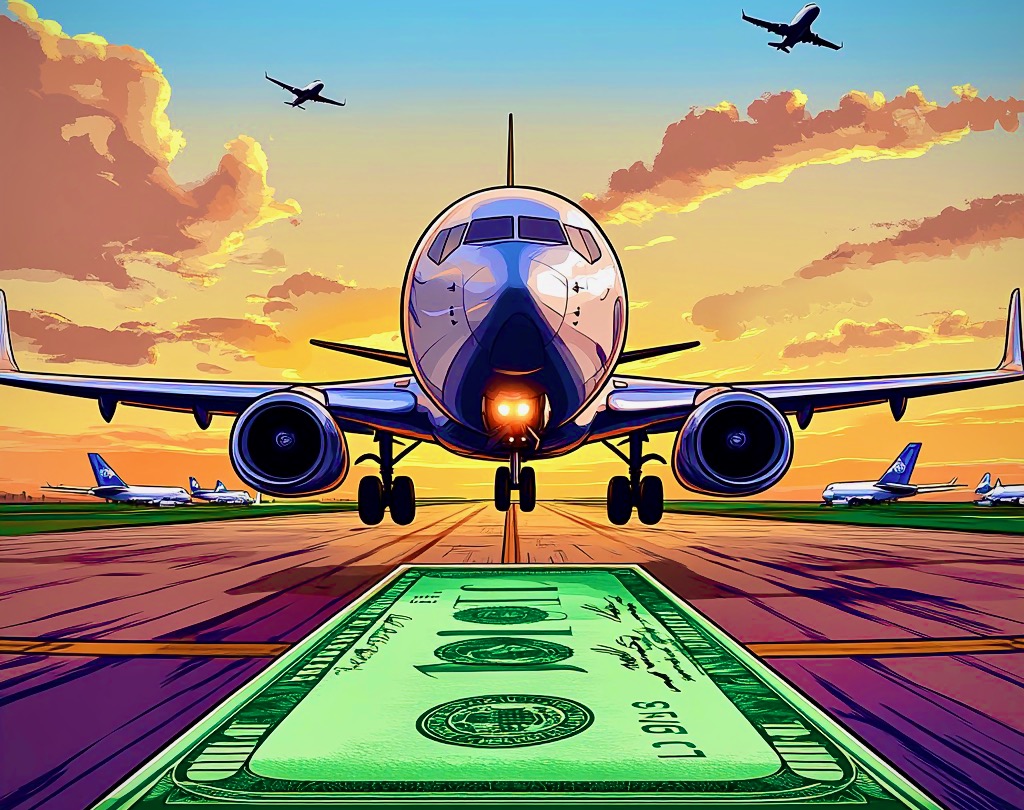
Beyond that came Alaska Air’s 737 door plug blow-out, contrailed with an eight-week strike by some 33k West Coast machinist union members that stalled production of 737 MAX, plus 767 and 777 widebody aircraft–grudgingly settled per a 38% pay and bennies raise over four years. Boeing soon posted a $6.17bn Q3 loss after already burning through some $10bn in 2024. Then the planemaker laid off 2,200 employees in Washington and Oregon, cutting 10% (17k) of its workforce overall.
Meanwhile an issue of forged paperwork on Chinese titanium parts hit the company’s inbox. And given the Arlington, Virginia-based company’s fraying relationships with the DOT, FAA and feds in general, Boeing’s head government affairs/lobbyist bailed ship. Moreover, its spacey Starliner transport program has been stranding two astronauts in the International Space Station for months on end. Never mind its troubled defense side.
Contra Culture?
These mounting whammies have taken a major toll on the Boeing Company, to where it was projected as 2024’s biggest on the Dow Jones Index, share prices down 32%, losing $11.8bn for the year. Conversely, rival Airbus’s rose 11% regardless of its own supply-chain woes, amid a record boom in air travel worldwide.
Aircraft production hobbled or halted altogether, supplier disruptions (e.g., fuselage maker Spirit Aerosystems in freefall), operational mishaps galore, existing planes aging by the day: Boeing’s cumulative quality and safety problems have long been rattling investor confidence and straining customer patience. This, as teeming airlines beg for new, cleaner, greener airplanes to speed up reset of their fettered growth and service plans.
Employee-wise, Kelly Ortberg has decried a corrosive in-house culture, managerial ranks to shop floors—rife with finger-pointing and whistleblowing—festering within a 170k workforce, some of whom seem to mistrust the very company for which they labor.
Buoyancy Or Bust.
Aerospace industry analysts submit that ailing Boeing should swiftly jettison such blaming, backbiting and this insurgent ‘contra culture’ altogether, increasing worker input on production issues and installing a reward system to encourage assembly line suggestions and further employee engagement. Same time, managerial and middleman layers could stand a healthy trimming; furthermore, design processes and manufacturing functions might become better aligned by reining in rampant ‘traveled work’ outsourcing scattered all over the map.
More broadly, observers call for a return to Boeing’s hallowed safety-first heritage of engineering quality over quickness and financial performance (so does BillyBoeing ☞ ); urging more company transparency, like when owning up to its errors; even proposing asset sales. But most of all an end to milking (and stretching) the venerable, decades-old 737 cash cow by simply adding more powerful engines, or repairing existing jets. That in effect meant grounding any costly, innovative new aircraft design and development beyond the fitful 787 Dreamliner.
); urging more company transparency, like when owning up to its errors; even proposing asset sales. But most of all an end to milking (and stretching) the venerable, decades-old 737 cash cow by simply adding more powerful engines, or repairing existing jets. That in effect meant grounding any costly, innovative new aircraft design and development beyond the fitful 787 Dreamliner.
As it happens, CEO Ortberg did recently announce a sale of $19bn to $24bn new stock shares, boosting cash reserves to just over $26bn, followed by a $1bn investment to boost 787 Dreamliner production in Boeing’s Charleston, South Carolina plant—cash burn notwithstanding—as post-strike production of 737, 767, 777/777X models ramps up anew, albeit with a tighter safety-management system online.
Nevertheless, it stands to be a long, fraught route to firmer company buoyancy, with the company’s ‘too-required-to-expire’ stature on the flight line. For bottom line: airlines need more planes aloft; Boeing needs to get/stay fiscally afloat.
Surely most everybody wants Boeing to thrive, not nosedive in 2025. Just the same, safety first, rebuilding trust, loom large as the aerospace giant regains altitude: For if Boeing ain’t regrowin’, we travelers may not be so easily goin’.
So wheels up on a mighty Boeing bounce, all right—as long as it’s not the dead-cat variety. (MTC…) ![]()
Boeing Ongoing…
(8/11/24+)—Where were we? It still seems to be on a nonstop flight (and fight), but at least the beleaguered planemaker has a new pilot.
Introducing the Boeing Company’s new CEO, Robert “Kelly” Ortberg, 64, a retired aerospace supply-chain industry veteran, beating out heir-apparent insider, Stephanie Pope’s presumed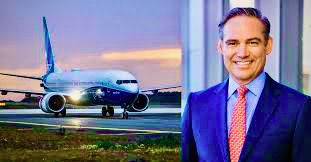 ascendency to the first chair. Ortberg is taking the helm from embattled Dave Calhoun, inheriting all the Calhoonery and Muiley mouthing those golden parachuters left behind: Namely the catastrophes, shortfalls (Q2: $1.44bn loss), safety scandals, criminal subterfuge, federal scrutiny, groundings, sanctions (16 enforcement cases), and class-action lawsuits. To be sure, what a fine mess the outsider has navigated himself into—what with all the aircraft Boeing’a still bound to build and is behindhand delivering. In essence, it will entail fundamentally re-routing the company’s profits-over-quality control misdirection.
ascendency to the first chair. Ortberg is taking the helm from embattled Dave Calhoun, inheriting all the Calhoonery and Muiley mouthing those golden parachuters left behind: Namely the catastrophes, shortfalls (Q2: $1.44bn loss), safety scandals, criminal subterfuge, federal scrutiny, groundings, sanctions (16 enforcement cases), and class-action lawsuits. To be sure, what a fine mess the outsider has navigated himself into—what with all the aircraft Boeing’a still bound to build and is behindhand delivering. In essence, it will entail fundamentally re-routing the company’s profits-over-quality control misdirection.
And that’s just for starters… ☟
The Shame Game.
The mechanical engineering-trained Ortberg most immediately faces a Congressional beatdown for safety lapses regarding that Alaska Air door plug blowout over Portland, Oregon. Add in the US Transportation Department pressing charges over the company’s alleged foot-dragging on FAA mandated remediation with respect to 737 MAX production and closer managerial oversight: the feds being all over that. Indeed Boeing has since copped to a felony plea deal with the Justice Department on its misdeeds MAX-wise (which crash victims’ families summarily renounced). The company has also accepted more FAA inspections independent of its in-house rubber stamping, vowing to reset, tighten its own quality targets and training procedures—all upon getting its wings get clipped yet again.
Re: 737 MAX 8/9 door panel: The hobbled aerospace giant has agreed to rework its plug and bolt securing design, given Alaska Airlines flight attendants’ recent Congressional testimony on cabin chaos/confusion, fears of passengers being sucked out the door hole. Moreover, in the wake of MAX and 787 Dreamliner fuselage misfit issues (e.g., joints and misdrills), the company will rein in 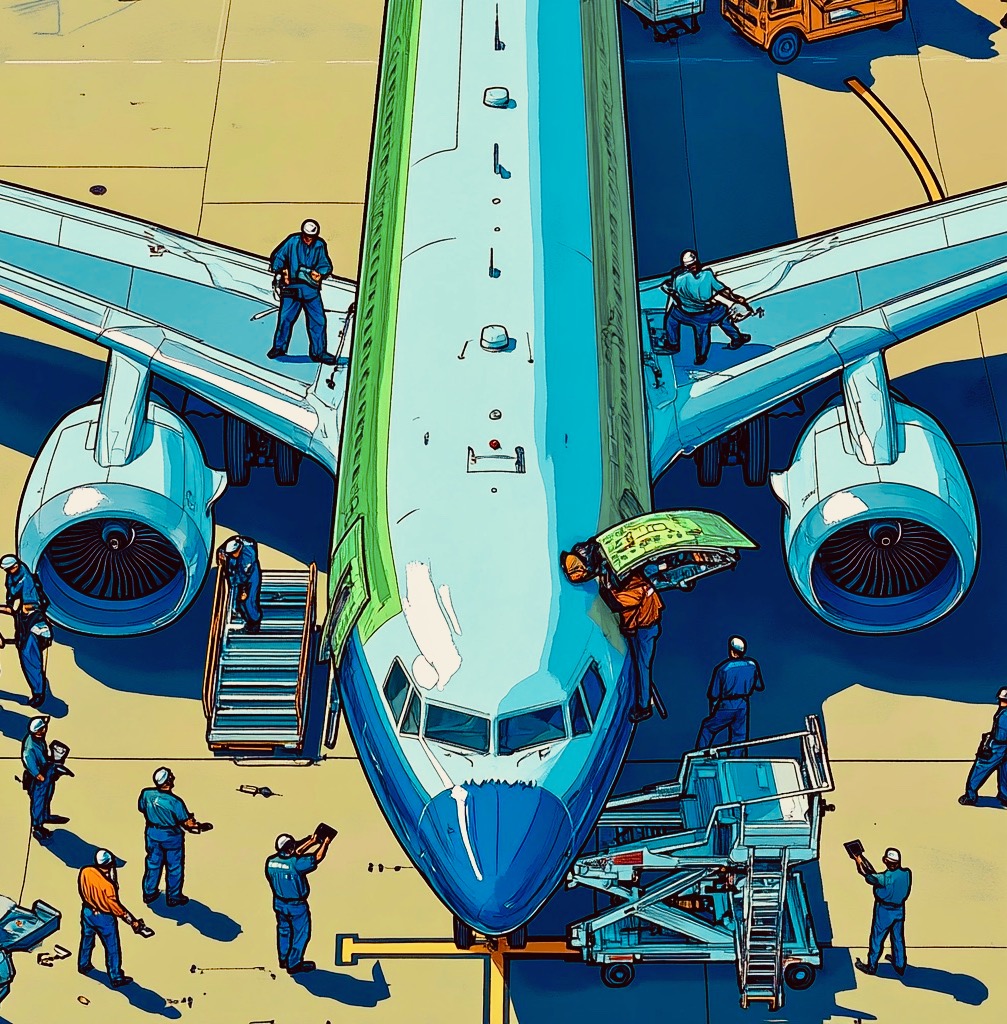 outsourcing, beginning with rebuying Spirit AeroSystems, spun off in 2005, much less issues of titanium forgery. Then come wing-to-engine structural problems with its overdue 777X, touted as the world’s largest, cleanest twin-engine jetliner.
outsourcing, beginning with rebuying Spirit AeroSystems, spun off in 2005, much less issues of titanium forgery. Then come wing-to-engine structural problems with its overdue 777X, touted as the world’s largest, cleanest twin-engine jetliner.
Meanwhile the federal scrutiny and throttled output have resulted in slo-go production lines from Washington to South Carolina—unfinished aircraft creating managerial headaches—plus a severe cash drain of $4bn-$4.5bn in Q2 and $58bn company debt. Still, pilot safety concerns and whistleblower complaints continue to stir Boeing, boardroom to shopfloors, not to mention alleged instances of employee overwork pressures and ‘sidelining’ retaliation.
This, as rival Airbus orders (e.g., $13.7bn from Korean Air) and delivery schedules hold steady, eating away at Boeing’s market share (especially via its popular single-aisle A320/1neo jets) by the day. Which is not to say the world’s largest jet planemaker hasn’t been saddled with its own Euro supply-chain delays and worker shortages, but it is operating with a $9bn cushion.
The Blame Game.
Same time, Boeing’s airline customers remain in a holding pattern on delivery of the new, cleaner/ greener aircraft they ordered months ago, up in arms over the incessant delays and let alone the quality of single-aisle planes that are rolling off production lines, Renton to North Charleston. Trimming flights, cutting routes, carriers are meeting surging passenger demand in a resiliently robust travel sector as best they can—blaming the planemaker for lost seat miles and revenue. Some alienated airlines claim supplier trust/dependency has been badly eroded, and increasingly seek redress, even looking Airbus’s, Embraer’s and Bombardier’s way.
So where does that leave us travelers? Are we to accept heedlessly the ‘reassurance’ of FAA and airline flight safety statistics above all, or be frightened off-board by Boeing’s 737 MAX-8 crash disasters and MAX-9 door plug ejection? Are we to be plane-neutral or comb, compare airline schedules and online trackers/filters for aircraft assignations per flight? Do we avoid certain makes and model as time and date allow—impractical and inconvenient such vetting can be amid already harried air travel today?
And how do we since factor in a walkout by some 33,000 IAM workers off Seattle’s 737, 767 and 777 assembly lines (9/13) over pay/benefits? With Boeing in turn announcing furloughs and hiring freezes (possibly by the tens of thousands, even engineers), estimating strike costs of some $500m per week? Given everything, should we expect these production/delivery delays to dog us for years on end?
Well, BillyBoeing would be the first to say: never fear, don’t worry, be goin’ anyway, because Kelly Ortberg is about to square away the company, put our engineering excellence first and foremost again where it rightfully belongs.
square away the company, put our engineering excellence first and foremost again where it rightfully belongs.
But if MAX-7, MAX-10 and 777x certification slogs drag on, if the Dreamliner nightmare continues and Starliner/NASA keeps two astronauts stranded on the ISS due to some confounding leak and propulsion problems, Vamigré says to keep our noses to the ongoing groundwork, and wary eyes to the skies. (MTC…) ☟
Boeing: Slowing the Going.
(4/29/24)—Worning lights, warning lights: The storied aerospace giant is currently at crossed contrails.
As covered below, the Boeing Company has announced that it is throttling down production levels and schedules for its commercial aircraft, 737 MAX family to 787 Dreamliners, apparently due to increased regulatory scrutiny of its shop floor safety protocols/procedures and overall quality control—not to mention its alleged ‘toxic to trust’ retribution culture. ☟
Meanwhile, dearth by a thousand cuts: the beleaguered planemaker reports a $4bn-$4.5bn slice out of its Q1 2024, earnings, much less a $355m quarterly loss; concedes turbo-burning cash to where Boeing is hitting debt markets for a $10bn infusion. Some $160m went to Alaska Airlines as compensation for the MAX-9 grounding after that door plug blow-out over Portland, Oregon. Add whistleblower charges of 787 parts shortages/scavenging (e.g., heat exchangers) and fit & finish fuselage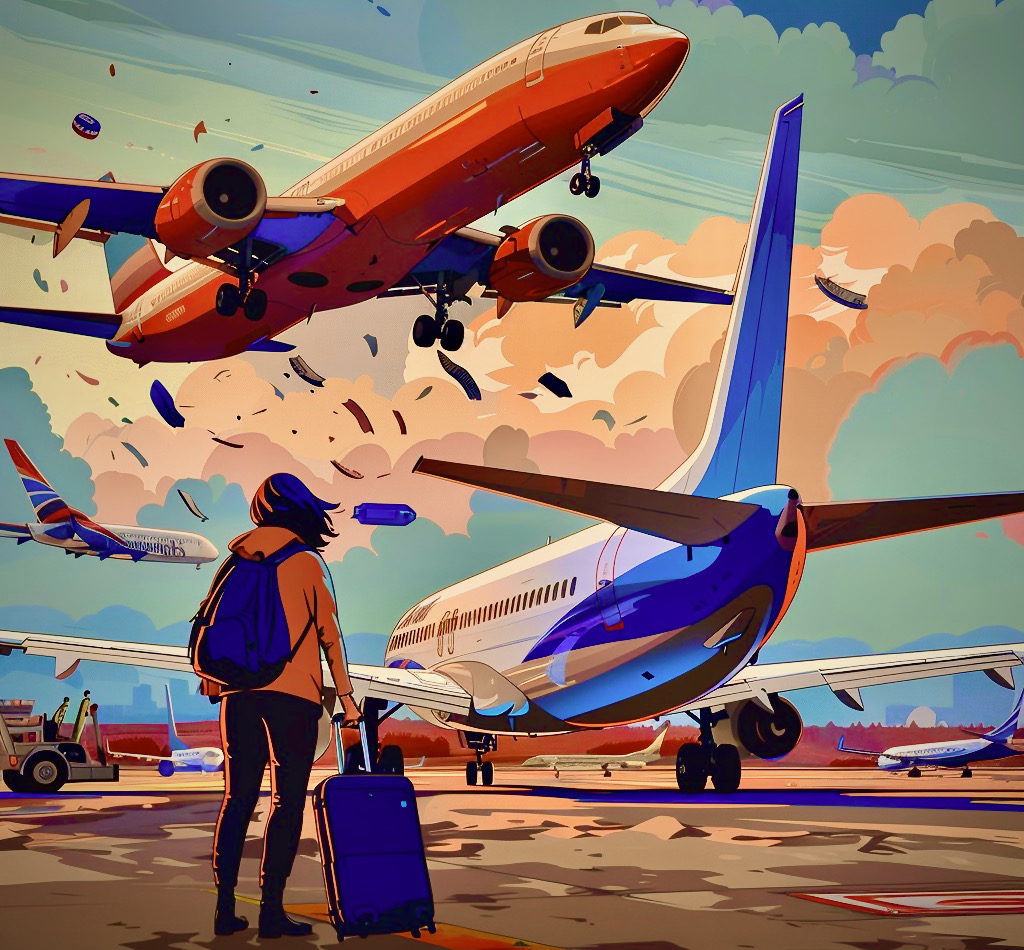 nightmares at Boeing’s South Carolina assembly plant: the FAA reactively bird-dogging falsified 787 inspection record keeping, as well.
nightmares at Boeing’s South Carolina assembly plant: the FAA reactively bird-dogging falsified 787 inspection record keeping, as well.
Same time, some airline pilots confide losing confidence in their latest Boeing aircraft, even as earlier iterations begin showing their age—from a thirty-something 757 shredding a wing flap to Delta’s 34 year-old 767-300 shedding an emergency slide that had torn through a poorly latched wing door, one hour out of JFK. Who knows what else might be falling from these planes? Shout out to D.B. Cooper, wherever you may be…
Still, what are demand-swamped carriers to do when desperately needed new, clean green aircraft are so backlogged from constrained Boeing and (profitable) Airbus alike? ‘Go with what they’ve got’ appears to be the airlines’ itinerary toward another surging travel season—whatever safety risks older, air-worn planes may pose. For its part, Southwest Airlines plans to trim schedules, even halt service to some airports altogether in cost-cutting moves. As airlines grapple with fleet fatigue/capacity shrinkage and lost revenue, redress or litigation are likely to loom, with air travelers ultimately paying the price for it all.
So what to make of Boeing’s current plight? Could searching afar for fresh CEO talent and leadership to replace ‘retiring’ Dave Calhoun be the corporate panacea? Is a better balance of manufacturing speed and safety/quality heed in the works—or of the commercial and defense sectors? Time to jettison the MAX mess and design a modern successor to the stretched-out 737 iterations, a powerful single-aisle rival to Airbus’s A320/1 series, and newly emerging Embraer models, if not China’s Comac C919? Should such a bold aerodynamic lane changer have been developed over a decade ago? Does it make fiscal sense to buy back a struggling Spirit AeroSystems supplier that it spun off short years before? And so on…
Moreover, beyond stanching the bleeding, slowing the growing, how does Boeing set new coordinates for product vision, brand image—a restorative company brand and  culture? Is this a matter of barreling straight ahead pell-mell—with minimal course changes—into the wild blue? Or instead banking smoothly, mapping a wiser route back to the future, toward a revisiting and re-commitment to Boeing’s proud history of engineering prowess and aviation excellence? Does it mean reining in the fluky, far-flung divisions of today, fully regathering the Boeing tribe about its original Seattle/Puget Sound roots and reign?
culture? Is this a matter of barreling straight ahead pell-mell—with minimal course changes—into the wild blue? Or instead banking smoothly, mapping a wiser route back to the future, toward a revisiting and re-commitment to Boeing’s proud history of engineering prowess and aviation excellence? Does it mean reining in the fluky, far-flung divisions of today, fully regathering the Boeing tribe about its original Seattle/Puget Sound roots and reign?
In any event, what does ‘BillyBoeing’ say about this cross-country mess and morass? What would BillyBoeing do about now? On that, watch for those contrails as they form and fade away. (MTC…)☟
Boeing, Bloodied Boeing.
(4/17/24)—Capitol Offense: Sworn testimony by so-called whistleblowers in a US Senate Commerce Committee hearing just called out Boeing for everything from production shortcuts to negligence to cover-ups and personal retaliation.
For one, a 17-year Boeing engineer, Sam Salehpour claimed shims designed to fill small gaps in 787 Dreamliner fuselage section joins were often left out, and that he also observed assembly line workers physically stomping on ill-fitting seams to force them into passable, if not proper alignment.
The still-employed engineer had warned of resulting premature fuselage fatigue that could cause a Dreamliner into nightmarish fracturing inflight. Yet he allegedly was ignored by Boeing managers for some  three years, and bodily threatened for slowing down production. Transferred out of the company’s South Carolina 787 plant to Everett, Washington, he said he found similar shop floor shortcuts on 777 assembly lines.
three years, and bodily threatened for slowing down production. Transferred out of the company’s South Carolina 787 plant to Everett, Washington, he said he found similar shop floor shortcuts on 777 assembly lines.
Ed Pierson, Foundation for Aviation Safety director, then questioned Boeing’s fundamental ‘safety culture’, accusing the company of “criminally covering up” its dubious safety protocols and slipshod failings.
Roy Irvin, retired quality manager, followed by claiming in writing that Dreamliner workers were dissuaded from openly citing problems or recommending changes.
In a separate panel hearing, the FAA said it is investigating these claims, but says preliminarily that it considers every commercial aircraft now flying to be in ‘airworthiness compliance’. Boeing itself rejects these accusations, insisting its planes are safe, and that it nevertheless is committed to tightening up its security safeguards and overall quality control.
No further offense, but the Senate committee still plans future hearings to revisit such Boeing concerns and ‘cultural’ renewal, particularly in light of the planemaker’s current financial hemorrhaging. (MTC…)
Cowlicked in Colorado.
(4/8/24)—Uncovering the power within: Southwest Airlines Flight 3695, bound for Houston’s William P. Hobby Airport with 135 passengers and six crew, made an emergency return to Denver International Airport 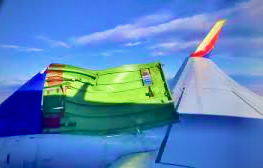 Sunday morning minus one engine covering at the very least. Fortunately, no injuries were reported so far.
Sunday morning minus one engine covering at the very least. Fortunately, no injuries were reported so far.
This latest SWA mishap involved a metal cowling suddenly unlatching, breaking loose from its 737’s right engine along the runway during takeoff, hanging barely beneath the wing, waving like a battle flag in the fierce wind before striking a wing flap and falling away—leaving the engine components largely exposed.
Upon landing back at DIA some 15 minutes later, the damaged aircraft was tractor towed to the gate. One 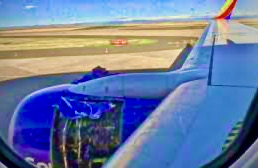 passenger said the plane shifted left and right from the get-go, not lifting normally as it reached a little more than 10,300 feet before turning tail. Eventually travelers boarded a different aircraft, which arrived at Houston Hobby four hours late.
passenger said the plane shifted left and right from the get-go, not lifting normally as it reached a little more than 10,300 feet before turning tail. Eventually travelers boarded a different aircraft, which arrived at Houston Hobby four hours late.
Southwest called the fan cowling ripoff and 3695 engine’s ‘licking’ a mechanical issue—this Boeing 737-800NG being a nine-year-old pre-MAX model that began SWA service in June 2015. But the FAA, which has initiated another incident/accident investigation (on top of other recent SWA engine failures and fires—Austin to Lubbock, Texas), will likely be the judge of whether this snafu can be pinned on ground service ‘ramp rats’, or plugged into Boeing’s revolving door once more.
However the NTSB has since determined that 3695 had been undergoing maintenance the previous (Saturday) evening, and an agency engineer has initially considered that the plane’s fan cowling had not been properly latched and locked. (MTC…)![]()
Boeing Backspin?
(3/28/24)—Doingo Boeingo: Systems fail, doors unplug, hatches detach, customers bail, so heads are a rollin’ in the uppermost cockpit of the Boeing Company ☟. For starters, top-gun CEO Dave Calhoun announced he will step down by year’s end, followed by commercial airplanes division head Stanley Deal’s soft landing to retirement, replaced by former CEO-in-waiting Stephanie Pope. Boeing board chairman Larry Kellner will also be stepping aside, succeeded by Steve Mollenkopf—who also leads the CEO search.
Production woes, regulatory scrutiny, media hounding, customer mutiny, rival poaching, a stock plunge and cash drain set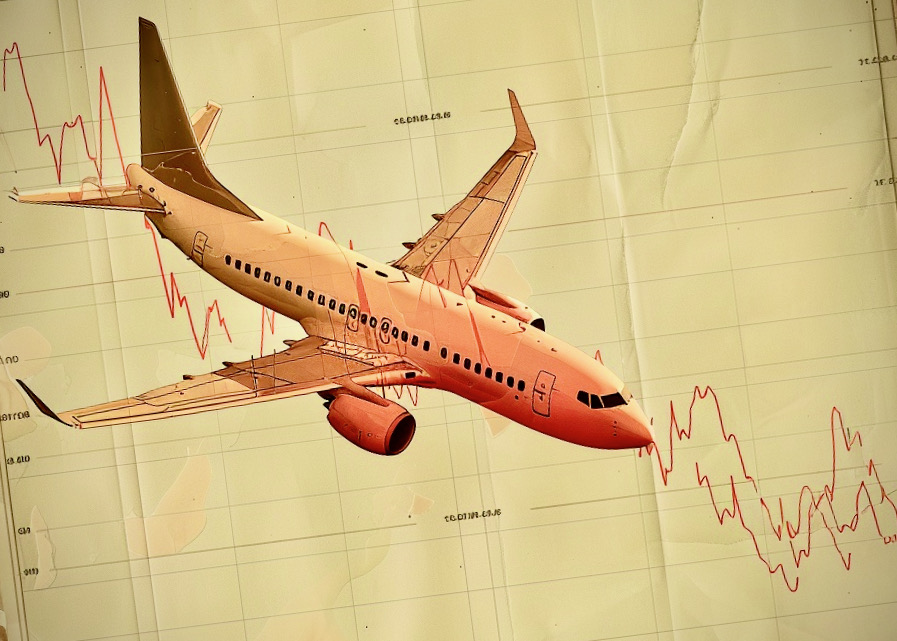 the coordinates for this executive shakeout. Now Boeing is reportedly looking outside the company for a new ‘star quality’ CEO to straighten up the outfit and fly it right again—not least reacquiring the sputtering Spirit AeroSystems unit it spun off in 2005.
the coordinates for this executive shakeout. Now Boeing is reportedly looking outside the company for a new ‘star quality’ CEO to straighten up the outfit and fly it right again—not least reacquiring the sputtering Spirit AeroSystems unit it spun off in 2005.
Tasks at hand? Tackling cultural issues of quality and safety, restoring the trust of regulators who sniff criminal negligence, and impatient airlines and travelers alike—let alone boosting cashflow, trimming debt and recouping lost market share. But most of all restoring the prized engineering chops upon which Boeing has built its sterling reputation since before the Second World War—particularly in light of the fact that a recent FAA audit found scores of slip-ups in the company’s quality-control regimen, resulting in a 90-day remedial deadline.
Further, instances of used parts swapping and ‘inspector shopping’ have surfaced amid a corporate culture of production speed rather than heed, with a lesser trained and seasoned workforce, in the contrails of pandemic period buyouts and early retirements.
Boeing? We Ain’t Goin’…
Bottom line: Current corporate obstacles meet contractual obligations: the company is on the hook to airline customers and passengers who are weary and wary of the tailspin, of delivery delays and product defects, to the point of defecting to Airbus SE. Indeed, some passengers are begging off boarding Boeing aircraft altogether. For these aren’t candy canes here, they are jet airplanes—and as UAL head Scott Kirby, puts it: “…this is not a 12-month issue, this is a two-decade issue.”
So seriously, Boeing is too big to fail, too booked to flail about very much longer—however they may fix to spin out of it all. (MTC…) ☟![]()
+ 757 Wing Ding, At That.
(2/21/24+)—Passengers on a recent United Airlines flight 354, San Francisco to Boston with 165 aboard, were quick to notice they were winging it under distress. For a starboard side forward wing slat was crumbling before their eyes—chipping, breaking apart, jagged pieces aspray in mid flight.
One passenger, whose over-wing window seat afforded him a bird’s-eye view of the tattering, said after the 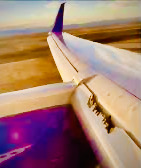 757’s emergency diversion to Denver that he noticed loud noises and metallic vibration as the forward flap began noticeably breaking apart. Turns out the wing slat serves to create more lift and helps the aircraft land at a safer, slower speed entering reverse (braking) thrust.
757’s emergency diversion to Denver that he noticed loud noises and metallic vibration as the forward flap began noticeably breaking apart. Turns out the wing slat serves to create more lift and helps the aircraft land at a safer, slower speed entering reverse (braking) thrust.
Fortunately Flight 354 suffered no significant airflow disruption during the flap deterioration, landing without injuries or further incident at DIA, where passengers eventually boarded an alternative UAL aircraft.
This 757-200 happens to be some thirty years old, having been built in 1994. Boeing actually ceased manufacturing 757s back in 2004—so there’s that, at that. Could be metal fatigue or shoddy machinist/maintenance issues, while UAL impatiently awaits lagging delivery of the clean, green nextgen jets it’s been trumpeting of late, likely not Rhapsodizing about those overdue blues at all.
Otherwise, the FAA is investigating the entire wing slat flap, hinting at increasing UAL oversight, perhaps capping its route expansion, meanwhile:
United: We Fall…
(3/8/24 +)—…One and all, for what a hell week it just was. First a UAL Flight 1118, bound for Fort Myers, Florida from Houston with 167 passengers, sucked some bubble wrap into its port-side engine, precipitating a ‘limited surge and stall’ as it was climbing at 10k feet. Passengers said the 21-year-old 737 began rocking back and forth, sounding ‘like a bomb went off’, as flames flared out of its surging #1 engine—the crippled jet safely returning to George H.W. Bush Intercontinental Houston Airport.
🛬 Another Houston landing didn’t go so smoothly, however: United Flight 2477 soon slid off the same runway in a rainstorm. The 737 MAX-8 skidded into the grassy shoulder, getting stuck in the mud, left landing gear collapsed, forward gear and nose pointing skyward. Further, UAL Flight 2137, an Airbus A320 headed for Salt Lake City with 149 passengers then returned to Chicago’s O’ Hare Airport once its oil warning light began telltale activating.
🛬 In due course, a United 777-200 departing San Francisco for Osaka, Japan with 256 passengers/crew shed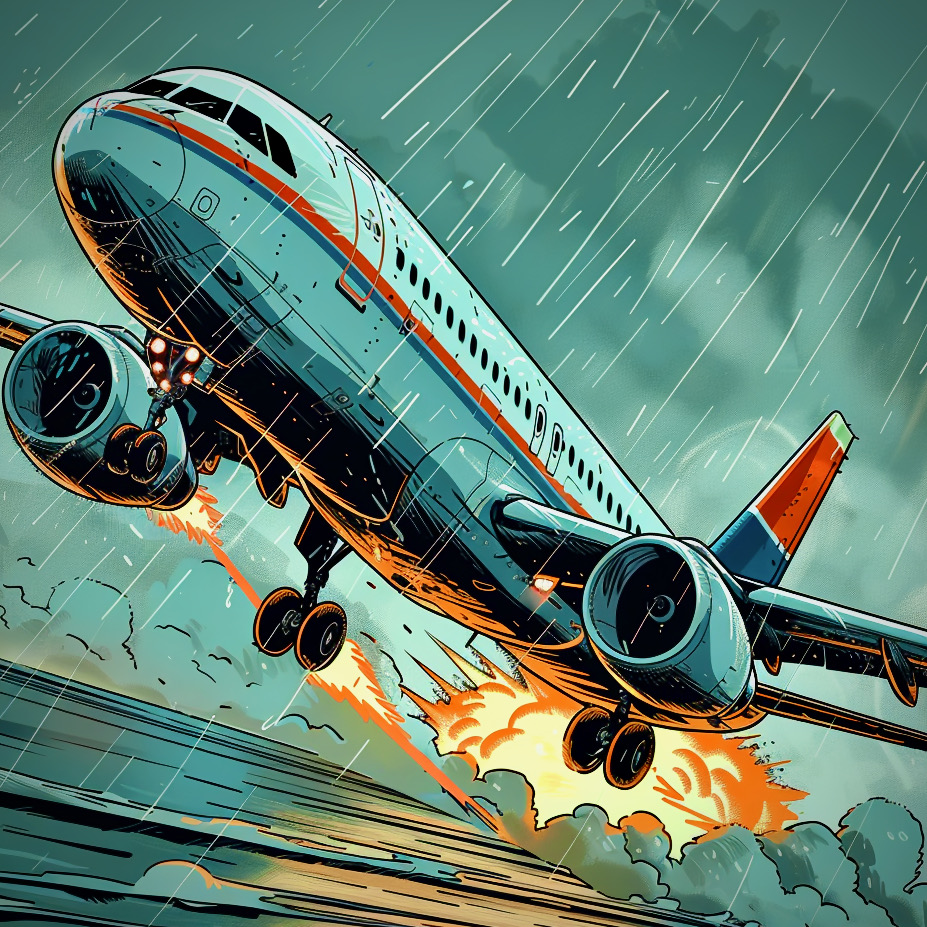 a left rear landing gear tire during takeoff, the errant 255 lb. wheel striking several cars in an SFO parking lot below. The long-haul plane emergency diverted to LAX without further incident. This, after United Flight 214 bound from Honolulu to San Francisco, a 21-year-old Boeing 757-300, suffered complete engine failure, emergency landing at SFO after flying an hour and some 300 nautical miles on its sole remaining power source, the starboard engine.
a left rear landing gear tire during takeoff, the errant 255 lb. wheel striking several cars in an SFO parking lot below. The long-haul plane emergency diverted to LAX without further incident. This, after United Flight 214 bound from Honolulu to San Francisco, a 21-year-old Boeing 757-300, suffered complete engine failure, emergency landing at SFO after flying an hour and some 300 nautical miles on its sole remaining power source, the starboard engine.
🛬 United’s dismal week ended with UAL Flight 821, an Airbus A320 bound from San Francisco to Mexico City with 105 passengers, emergency diverting to LAX with one of three hydraulics systems malfunctioning. And these incidents are the contrails of UAL Flight 1539, flying into Newark, NJ February 6 from Nassau, Bahamas with 155 passengers and six crew. Its captain later revealed that the 737 MAX-8’s rudder pedals were “stuck” as the plane landed at Newark Liberty International Airport.
🛬 Specifically, the aircraft’s rudder pedals ‘froze’ in neutral position during ‘rollout’—between touchdown and reverse-thrust braking to landing speed—preventing the cockpit crew from hewing to runway centerline despite feet pressing harder and harder. So the pilots resorted to using the nose wheel steering tiller, safely maintaining centerline positioning as they slowed to taxi speed and runway turnoff, wherein the rudder pedals and surface returned to normal. But a February 9 flight test found that very plane’s rudder system sticking just the same—the FAA, NTSB and Boeing investigating yet again.
Anyway, all told, there were no reported injuries, no striking fowl for that matter. In each case, passengers were apparently re-routed to other aircraft with minimal fuss. Still, for United Airlines, the hits just kept on coming all week long—friendly skies clouding over, hopefully but a fleeting squall, right? Especially now with spring break travel well underway.
🛬 But then comes a Boeing 787 doing a deep Dreamliner dive during a Latam Airlines Flight 800 between Sydney, Australia and Aukland, New Zealand, injuring 50 of 263 passengers. The “technical event” caused riders to hit the ceiling, ceiling panels to hit the floor. Flight control system glitch or clear air turbulence, (possibly a meal-serving flight attendant bumping into a pilot who consequently tripped an electronic switch on his seat that pushed the plane’s nose?!): whatever, this sudden altitude lurch amounted to another Dreamliner nightmare. Having occurred in international airspace, the dip is being investigated by Chilean and New Zealand civil air authorities. But at least the 787 airliner bore Chilean colors rather than United’s.
No such luck with United’s 777-300 bound for San Francisco with 183 passengers/crew shortly thereafter, which safely returned to Sydney two hours into the 14-hour trip with yet another “maintenance issue”. Much less UAL’s hydraulic-leaking Airbus A320: Flight 1816, soon headed for San Francisco from Dallas-Ft. Worth with 150 passengers and five crew, touched down safely as well, albeit with its landing gear region blowing significant smoke. Since has come another engine problem (Flight 990 , a 777-200, SF to Paris with 273 passengers, diverting to Denver), then Flight 1003 (SF to Denver) returning to SFO after a cockpit windshield marred bird strike. (MTC…) ☟
Dreamarish Bloodletting.
(3/12/24)—Add to that this nonstop fight: namely the latest news that a 30-year Boeing veteran and whistle-blowing quality manager has apparently committed suicide in Charleston, South Carolina. John Barnett, 62, died of a gunshot wound in the driver’s seat of his pickup truck, which was parked near his law firm as he prepared to resume a deposition in his whistleblower retaliation and career-quashing suit against the aerospace giant—with a Labor Department legal hearing slated for June. Having retired in 2017, Barnett went public on production quality/safety issues he encountered on the 787 Dreamliner assembly lines at Boeing’s North Charleston, SC plant. Hostile working conditions, pressure-packed deadlines to faulty oxygen systems, errant metal slivers/shavings, and scavenging ’non-conforming’, used or outdated parts: in all a “pecking away of quality” that the Boeing Company categorically denies. (MTC…)
![]()
—9 Lives: Redress Under Duress.
(1/30/24 +)—Living to fly another day (or so), 737 MAX-9s, mainly with United and Alaska Air tails, have been cleared for takeoff again by the Federal Aviation Administration after a weeks-long grounding and tighten-up scrutiny. If only the skies and Boeing’s fortunes flying forward were nearly as clear. (Update 2/21/24): Ed Clark, vice president and general manager of Renton’s 737 program since 2021, an 18- year Boeing veteran and former chief 737 engineer and mechanic, has been MAXxed out and is leaving the company. Taking the Renton yoke is Katie Ringold, who has been overseeing 737 customer delivery. While Elizabeth Lund assumes the new role of Senior Vice-President for BCA Quality (control).
Nevertheless, the beleaguered planemaker faces even stricter FAA (possibly criminal case) scrutiny (“nose to tail, wingtip to wingtip inspections/audits”), safety stigmas, supply chain bottlenecks, production delays, impatient customers and investor lawsuits. Moreover, that doesn’t 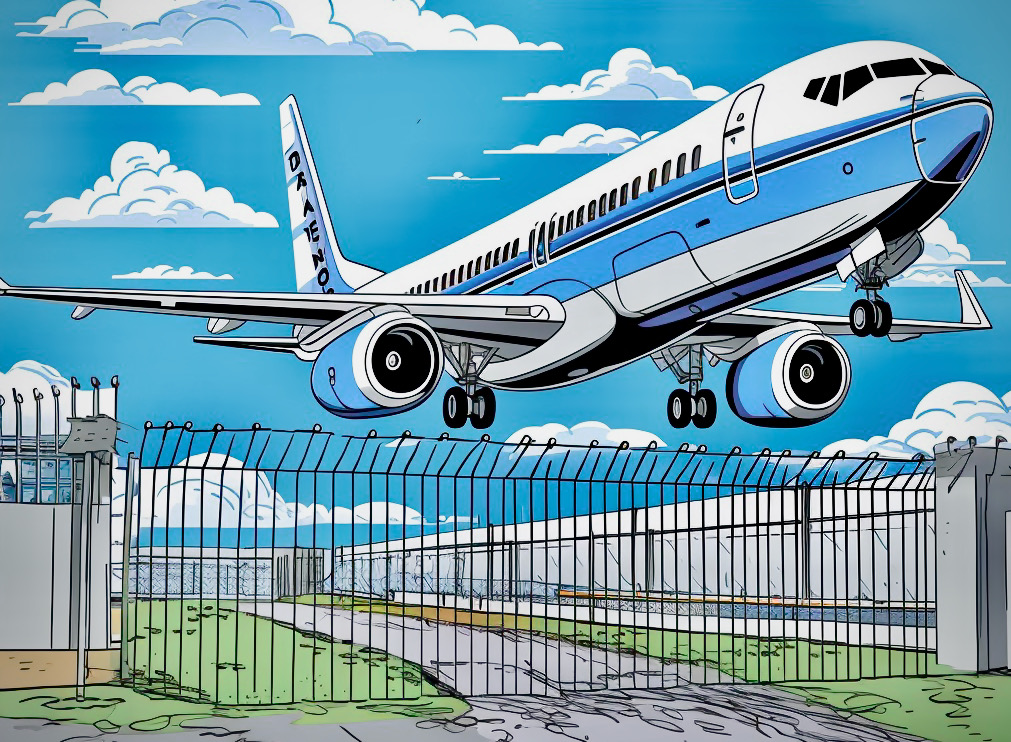 begin to chart Boeing’s further plights MAXXing out its 737–7, –8 and –10s.
begin to chart Boeing’s further plights MAXXing out its 737–7, –8 and –10s.
So where did the company’s ‘flight to the future’ turn sideways? Some aerospace observers point way back to Boeing’s decision to stretch and supercharge its single-aisle 737, rather than design a wholly new jetliner variant on a ‘clean white sheet of paper’—much like it had since launching the legendary 707. Quicker, cheaper—evolutionary rather then revolutionary—riding on a proven workhorse and blue sky reputation: What could possibly go haywire on the ‘trusty’ assembly lines of Renton, WA, let alone aboard the increasingly power-packed, lengthier and longer range 737s aloft? But of course that was then…
When Pigs Fly?
Counting the ways today: Earlier fatal LionAir and Ethiopian Airline MAX-8 disasters respectively acknowledged, Boeing’s current MAX-9 redress involves mis-drilled fuselages, missing exit door frame bolts, negligent plug reinstallation, a breakaway door plug panel, stray tools, loose hardware, and cockpit windshield cracking, at that. As they cautiously sign off on the–9’s next life, FAA—not to mention NTSB—investigators examine Boeing’s overall 737 (safety) design/manufacturing, suspect maintenance and a labyrinth of component outsourcing. The NTSB has since determined that the four key door plug bolts were not replaced upon Renton line workers’ repair of damaged rivets around the door frame, and apparently had been missing for months (and over 150 flights).☟
Among further systemic issues reportedly under federal oversight are the Spirit AeroSystems’ fuselage tubes railed to Renton from Wichita, to door panels flown in from Malaysia. Regulators focus on subcontracting factory to factory, impact on quality control/accountability, including hurried and/or inexperienced staffing stretched thin. By the same token, FAA inspectors themselves have been under funded and in short supply on the flight lines and shop floors—not unlike the brain drain in air traffic control towers and airliner cockpits post COVID pandemic.
For its part, Boeing admits the entire MAX-9 plug blowout and grounding, plus the increased regulatory scrutiny, will likely further drag on its aircraft output throughout 2024— also affecting fast-track production/certification of the shorter MAX-7 and stretch MAX-10. Still, the company vows to bounce back (citing stronger Q4 revenue, even as it withholds 2024 financial targets), and declaring that “…we must and will do better”. This, as Airbus wipes the shop and trading floors with them.
Waiting On The Wings.
Meanwhile Boeing’s airline customers are desperate for new, cleaner and greener planes to serve a non-stop burgeoning demand for air travel. Scrambling carriers find they must cut routes and continue to fly aging, less fuel-efficient aircraft, like the Delta 757-200 (over 25 years old) that shed a nose gear wheel as it 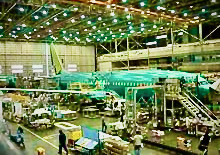 recently taxied for takeoff to Bogota from Atlanta’s Hartsfield-Jackson International Airport. Indeed other, more de-fleeted airlines are combing and bidding up the second-hand market for the best ‘jalopy jets’ they can find (Electras and DH Comets anyone?).
recently taxied for takeoff to Bogota from Atlanta’s Hartsfield-Jackson International Airport. Indeed other, more de-fleeted airlines are combing and bidding up the second-hand market for the best ‘jalopy jets’ they can find (Electras and DH Comets anyone?).
It’s getting to where United is questioning its MAX-10 order contract altogether and looking toward aircraft alternatives, especially upon projecting a Q1 operating loss. All the same. Boeing’s rival Airbus, now the world’s largest airplane manufacturer, is straining with its own production backlog and supply chain disruptions, throttling delivery of its popular, comparably reliable single-aisle A320/1neo. Order books a-bursting, Airbus claims to maintain a “quality over quantity” flight path, with an entirely new clean, green single-aisle aircraft in the works. Toulouse Le Trek!
Hence sacré bleu! Boeing investors are just as cranky and impatient as the carriers, now suing the aerospace giant for misleadingly stressing profit over jetliner safety, concealing inferior quality control over the manufacturing process, and making false statements to inflate its stock price—while allegedly just pressing to get planes out the door. The lawsuit, filed in Alexandria, VA under State of Rhode Island Office of the General Treasurer v Boeing et al, particularly targets Boeing CEOs present and past: Dave Calhoun and Dennis Muilenburg respectively, including their Chief Financial Officers.
So only time will tell whether Boeing’s fat-cats can bounce back to even a whisker of the 737s’ many redressed lives. (2/28/24): Especially since an independent panel, convened by the FAA, has found safeguard gaps in Boeing’s systems of voluntary problem reportage/resulting retribution; human factor engineering, and pilot input on aircraft design and operation. In all, the expert panel’s federally mandated review issues some 53 recommendations for a more ‘positive safety/quality culture’, giving the planemaker 90 days to reply and comply.
At any rate, Vamigré will keep gathering the facts as travelers take it to the MAX again…or not, as the case and inclination may be. Otherwise, see the passenger litigation begin. (MTC…)
☟ Tough Shedding.
(1/6/24 +)—Turns out that airworthiness answer came blowin’ in the wind, as the FAA has grounded some 170 Boeing 737 MAX-9 aircraft for immediate inspection after the latest MAX mishap/malfunction. Alaska Airlines Flight 1282, bound from Portland, Oregon to Ontario, California late Friday afternoon with 171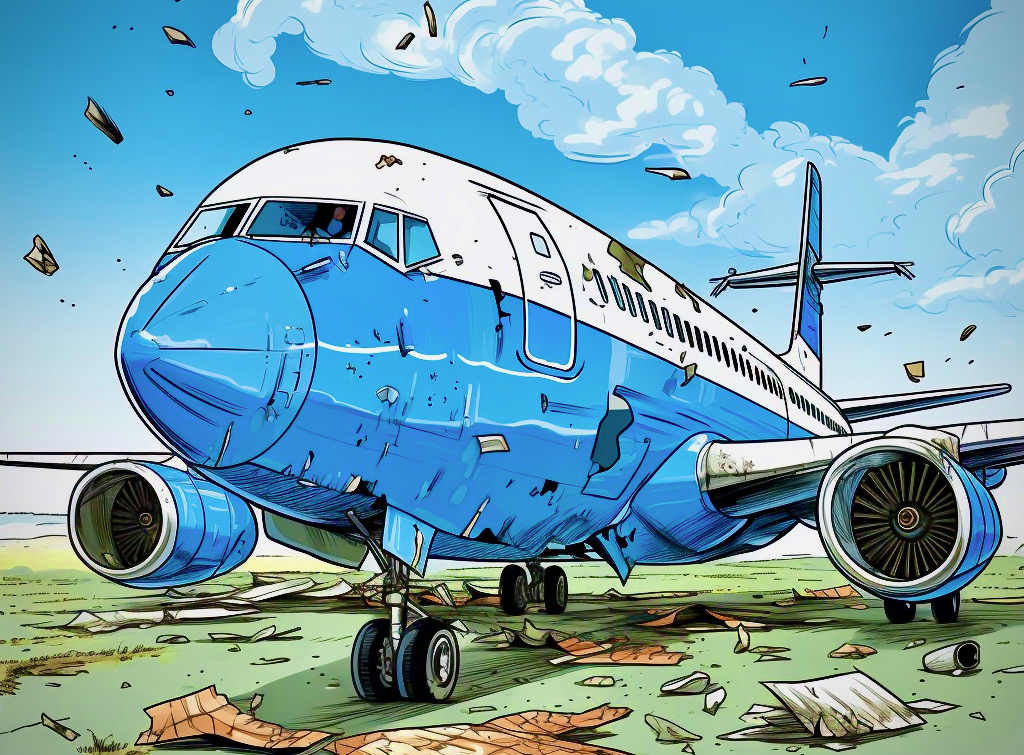 passengers and crew of six, had to make an emergency landing back at PDX barely 20 minutes after takeoff.
passengers and crew of six, had to make an emergency landing back at PDX barely 20 minutes after takeoff.
No significant injuries were reported once the impaired plane landed, and passengers were eventually redirected to other aircraft as sudden flight cancellations cascaded down airport schedule boards—many of the Flt. 1282 fliers still windblown, shaken and confused.
The jetliner, delivered to Alaska Air three months ago after the variant’s two-year grounding in the wake of the 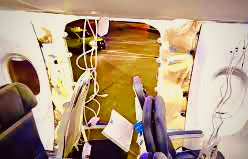 fatal MAX-8 LionAir and Ethiopian Air disasters, suffered a fuselage failure six minutes into the flight—while it was climbing at some 16k feet. A left rear cabin panel blew off with a terrifying bang and whoosh, tearing away two adjacent, row 26 empty seats, a boy’s shirt, smartphones and even a pilot’s headset—all sucked out toward the exposed night sky through a Frigidaire-size hole. Rapid cabin decompression ensued, oxygen masks dropping down as wind roared throughout the chaotic cabin. The panel itself, a plug (w/window) is designed to substitute for emergency-exit doors in certain more spacious (189 seat) MAX-9 configurations.
fatal MAX-8 LionAir and Ethiopian Air disasters, suffered a fuselage failure six minutes into the flight—while it was climbing at some 16k feet. A left rear cabin panel blew off with a terrifying bang and whoosh, tearing away two adjacent, row 26 empty seats, a boy’s shirt, smartphones and even a pilot’s headset—all sucked out toward the exposed night sky through a Frigidaire-size hole. Rapid cabin decompression ensued, oxygen masks dropping down as wind roared throughout the chaotic cabin. The panel itself, a plug (w/window) is designed to substitute for emergency-exit doors in certain more spacious (189 seat) MAX-9 configurations.
FAA regulators, the NTSB and Boeing officials swiftly began safety inspecting the grounded MAX-9s, primarily of Alaska and United Airlines—figured to take some eight hours per plane max. Alaska flies 65 MAX-9s, 20% of its fleet; United has 79. The NTSB soon noted that had this incident occurred at cruising altitude (over 30k feet), it could have been catastrophic. But no further structural damage to this particular MAX-9, which had logged barely 145 flights, was found by inspectors or Alaska Airlines personnel early on. Even so, United Airlines inspectors have since reportedly found loose plug bolts on several of its MAX-9 emergency door frames. Otherwise no other Boeing 737 models have come under such scrutiny to date.
Blowing the Door off?
As it happens, Alaska has since acknowledged internal warnings of such loose bolts on this very Flt. 1282 plane three days before the blow out. Moreover, Alaska flight crews previously cited cockpit warning 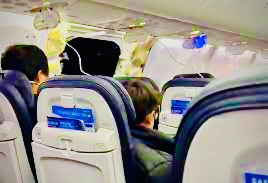 lights of cabin decompression on this particular aircraft three different times (a slow pressure leak?). But apparently each occurred while the plane was taxiing; all were written off as a flight deck glitch. Nevertheless Alaska Air further reveals having restricted its MAX-9s from flying over water (e.g., to Hawaii) shortly before.
lights of cabin decompression on this particular aircraft three different times (a slow pressure leak?). But apparently each occurred while the plane was taxiing; all were written off as a flight deck glitch. Nevertheless Alaska Air further reveals having restricted its MAX-9s from flying over water (e.g., to Hawaii) shortly before.
Meanwhile, foreign carriers like Aeromexico, Turkish Airlines, Icelandic and Copa Airlines of Panama have also grounded their MAX-9s, as Indian aviation regulators (DGCA) grounded smaller 737 MAX-8s nationwide for similar inspections, presently having no MAX-9s in Indian airline fleets.
This, as the jettisoned plug has subsequently been found in a Portland schoolteacher’s back yard and removed by NTSB examiners for analysis. Inspectors continue searching for missing bolts that are key to steadying the plug panel that replaces a standard exit door in this MAX-9 configuration. Those ‘stop bolts’ secure spring-loaded hinges on the plug’s four corners, which hold the panel in place by locking all four of its guide tracks around the fuselage’s door frame roller pins. Thusly these stop bolts (and fittings) keep the 63-pound plug from shifting up and out under pressure—let alone flying off the way it did.
Ground Force.
Alaska Airlines, having grounded all its MAX-9 iterations, has cancelled hundreds of flights since Saturday, as has UAL, with the certification/safety inspection process broadening. The FAA 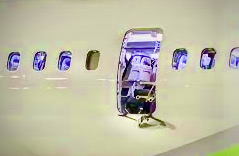 is opening an audit of Boeing’s safety/manufacturing procedures, ‘hands-on’ overseeing the entire inspection regimen, maintenance logs to lab analysis, not least checking out the notion that a recent wireless internet installation may have somehow impacted cabin pressurization.
is opening an audit of Boeing’s safety/manufacturing procedures, ‘hands-on’ overseeing the entire inspection regimen, maintenance logs to lab analysis, not least checking out the notion that a recent wireless internet installation may have somehow impacted cabin pressurization.
Another issue is how the impenetrable ‘hijacker-proof’ cockpit door sprung open at the same time, and why it apparently was designed to do so—say, to improve air flow in ‘extreme’ cases of such rapid depressurization.
For its part, Boeing is once again in ‘our bad’ crisis mode, conceding quality missteps in a company-wide town hall, while the FAA broadens its MAX inspections to the 737-900ER model—flown largely by low-cost airlines. The planemaker explained that it has been pressured to increase MAX-9 production by refleeting carriers, while being under the regulatory microscope and coping with production parts delays.
In turn, focus once again centers on Spirit AeroSystems, the planemaker’s primary 737 MAX fuselage manufacturer—ostensibly to determine whether Flt. 1282’s near disaster stemmed from poor panel assembly or failed design, much less if the plug bolts were installed at all. Turns out Boeing employees in Renton had removed the plug earlier to ‘tighten Spirit’s’ screws’ around the panel and doorframe—apparently not tightly enough on its replacement. (Update 3/7): The NTSB is not happy with Boeing’s tail dragging on supplying production data and key names regarding the door frame rivets/plug reinstallation procedures. Moreover the entire snafu may subsequently come under Justice Department scrutiny (including Alaska Airlines), part and parcel of a criminal investigation—even as Boeing pledges to more closely link its production pay and bonuses with keener metrics of safety and quality control–perhaps even repurchase Spirit AeroSystems itself.
(3/15/24)—Then again, another flight, another Oregon panel flap: This time, United Flight 433 from San Francisco with 139 passengers and six crew landed safely at Rogue Valley International Airport in Medford, Oregon, but something was missing. The 25-year-old Boeing 737-800 was found to have been lacking an external panel on the plane’s underside—located at the wing-body join, too near its landing gear—which apparently went undetected on the SFO tarmac or fell off during the flight. In any event, a search of the Medford run/taxiways uncovered no panel debris, and no injuries were reported. The FAA is investigating once more—but such midair stripping has just got to stop already…
This, as Airbus’s A320/1neo continues to eat Boeing’s meal ticket, further expanding the Euro rival’s commercial jet market dominance up and down the respective product lines. But it doesn’t hurt that 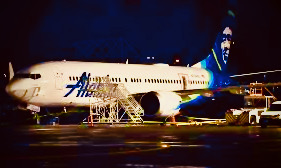 India’s new Akasa Air has since ordered a mixed fleet of Boeing’s single-aisle MAX-10 and MAX 8-200s—to be delivered through 2032.
India’s new Akasa Air has since ordered a mixed fleet of Boeing’s single-aisle MAX-10 and MAX 8-200s—to be delivered through 2032.
Even as Delta orders 40 Airbus A350-1000 wide bodies just after one of its 757s lost a nose landing gear wheel—which happened to break free on an Atlanta’s Hartsfield-Jackson Airport taxiway as the aging Boeing jetliner rolled toward takeoff to Bogota, Colombia. Meanwhile United Airlines hints at looking Airbus’s way as well, projecting a money-losing Q1 due to the 737 MAX groundings. UAL has since instructed Boeing to stop building out its 277 MAX-10 jet order due to the new variant’s certification delays, opting to order more MAX-9s plus…Airbus A321s.
For us passengers, it’s a matter of hurry up and stall out all over again, what with notice of resulting flight cancellations often coming within mere hours of scheduled boarding. Best to hope for an aircraft swap or ticket refund, and stayed glued to our screens in days ahead. (MTC…)
Slowing Its Roll.
(12/15/23)—Boeing has just announced that it will slow its overall rollout of single-aisle 737s, from 47 to 42 per month, beginning in February 2024. The planemaker cites supply-chain delays and production snafus—with rival Airbus no less afflicted—even as carriers’ demand for new, cleaner and greener aircraft soars ever higher.
The 10s Have It.
(12/5/23)—At long last, the Tension has eased. Because Boeing announced on November 20 that the FAA has cleared its 737 MAX 10 for certification flight testing.
The federal aviation agency’s type inspection authorization—handed down after thoroughly examining the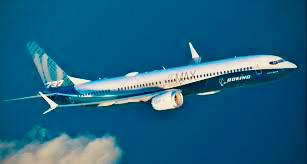 model’s technical data—means FAA pilots can begin participating in actual flight testing. The determination is a key step in certifying the new aircraft variant for normal carrier operations.
model’s technical data—means FAA pilots can begin participating in actual flight testing. The determination is a key step in certifying the new aircraft variant for normal carrier operations.
It’s a Stretch.
Significance? The MAX 10 is Boeing’s largest 737 family iteration yet, outsizing the Model 9 in fuselage length and capacity, let alone the far smaller Model 7—which itself is still idling for FAA certification, possibly by year’s end.
The MAX 10 is geared to battling Airbus’s A320neo for supremacy in the single-aisle airliner skies. With over 400 Boeing test flights and nearly 1,000 flight hours already logged, the planemaker’s executives foresee fully certified 737 MAX 10s taking commercial flight sometime in 2024.
That is, as maximum safety and Tenacity would have it, wing and prayer-wise—while they all toil to make the 10 an absolute 10 at last. (MTC…)![]()
(7/8/23) Très Paree.
It should be noted that Boeing and Airbus sales figures have since improved (upwards of 40%) amid continued soaring commercial demand. Indeed, thanks to a robust Paris Air Show, Boeing has just booked 316 new jet orders (including 296 737 MAX, 10 777X, 8 787 Dreamliners). But Airbus stole the annual aviation-industry trade show with 821 signings, owing to a record IndiGo Airlines order for 500 narrow-body A320-family planes (added to further A220-A350 bookings). The low-fare carrier, India’s largest 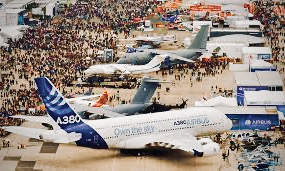 airline, sees no let up in post-pandemic customer demand, thus placing the $50bn order, doubling its fleet to serve the surge of domestic and international air travelers.
airline, sees no let up in post-pandemic customer demand, thus placing the $50bn order, doubling its fleet to serve the surge of domestic and international air travelers.
Yet that order, like most other Paris trade show bookings, comes at a time when both aerospace giants struggle to maintain their production schedules, citing regulatory issues and supply chain bottlenecks—from chips to airframes and jet engines (the latter by GE Leaps and GTF bounds). Therefore the massive IndiGo order is more a “reservation of backlog slots”, with actual delivery target dates between 2030 and 2035.
Talk about blue-sky planning, but it does pressure Airbus and Boeing to throttle up their assembly lines, briskly building those sleeker, greener new jetliners before the skies go gray—error/snafu-free, at that. Question is, how’re they gonna keep flexing their production arms after they’ve seen Paree? (MTC…)![]()
(5/19/23) High on the Down Low.
Amid stalled 737 MAX and 787 Dreamliner deliveries, Boeing has just released its Q1 financial numbers with a conditionally optimistic outlook for the course of 2023. Particularly since it has just logged a “dramatic rebound in orders—most notably a $40bn booking, 200-300 planes—for low-cost Euro leader, Ryanair, at a premium per-price after all their haggling.☟(5/24/22)
The Dublin-based carrier is popping for 51 737 MAX 8200, MAX 9 and MAX 10 variant jets, delivery to begin by July 30, 10v (not yet certified) deliveries promised from 2027 through 2033. Ryanair says the additional seating, from 200 to 10’s 230 will nearly double its traffic as soon as 2034. This order comes as United Air has also signed on for MAX 10s, and Air India has sprung for nearly 500 new MAX jets
Otherwise, the planemaker’s quarter revenue climbed 28% over the same period in 2022, to $17.9bn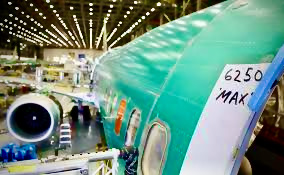 —albeit with a net operating loss of $425m. The main drag co-inefficient: A 737 MAX snafu over those failed fuselage fittings☟. The production misplay has broadly, adversely affected deliveries and revenue, as the Arlington, VA-based company seeks to right its operations and restore financial strength after the 2018/19 MAX crash disasters.
—albeit with a net operating loss of $425m. The main drag co-inefficient: A 737 MAX snafu over those failed fuselage fittings☟. The production misplay has broadly, adversely affected deliveries and revenue, as the Arlington, VA-based company seeks to right its operations and restore financial strength after the 2018/19 MAX crash disasters.
Still, Boeing announced that MAX orders continue to grow, and it plans to boost monthly output from 31 to 38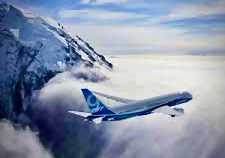 copies flying forward. Meantime however, the 737 MAX delivery squeeze in coming months will likely rub out at least 9,000 much-needed seats from its airline customers’ Spring through Summer schedules.
copies flying forward. Meantime however, the 737 MAX delivery squeeze in coming months will likely rub out at least 9,000 much-needed seats from its airline customers’ Spring through Summer schedules.
Otherwise, the aerospace giant’s 787 deliveries are cautiously projected to soon resume, and it will increase output from 3 to 5 wide-body Dreamliners per month over the year—under continuing FAA scrutiny over unstable 787 horizontal stabilizers.
So bottom line, Boeing is taking off into Q2 on a high note, guilt-edged though that may be. In any case, as one airline executive put it, we need a strong Boeing bounce back, and fast. (MTC…)![]()
(4/17/23) Double Jetpardy.
Just when it looked like Boeing’s 737 models were fully geared up to MAXximize their reset, FAA regulators hit them with yet another stormy error pocket. ☟
If only its 787s could be ‘wingman’ for the revenue strained planemaker; instead the Dreamliner nightmare continues as well…
Fits to the MAX.
Citing a “non-standard manufacturing process”, the federal aviation agency has ruled that Boeing incorrectly installed 787 fuselage parts: specifically regarding two faulty rear brackets, resulting from putting more force than recommended on the fittings. Thus the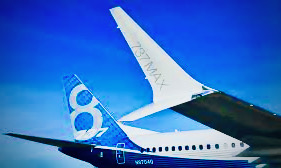 now Arlington, Virginia-based company has temporarily paused production of 737 MAX 7, 8 and stretch 8-200 jetliners, awaiting fuselage revisions from supplier, Spirit Aerosystems Holdings, Inc. (Update 4/1/23): 737 MAX 7 (re) certification is again mired in FAA specification/safety oversight and the resulting paperwork.
now Arlington, Virginia-based company has temporarily paused production of 737 MAX 7, 8 and stretch 8-200 jetliners, awaiting fuselage revisions from supplier, Spirit Aerosystems Holdings, Inc. (Update 4/1/23): 737 MAX 7 (re) certification is again mired in FAA specification/safety oversight and the resulting paperwork.
Wet Dreams.
Meanwhile, stylish as the 787s may be, their ‘drip’ leaves something to be redesigned. Repetitive FAA inspections going back to November 2022 discovered that certain Dreamliner lavatory faucets were leaking, leading to a “loss of continued flight safety and landing.”
Reportedly the drip, drip, drip could run to upwards of eight ounces of water per hour on multiple 787s being tested—potentially seeping under cabin floors, posing a water safety threat to the Dreamliners’ electronics: crucially pre-flight, aloft and during landing procedures.
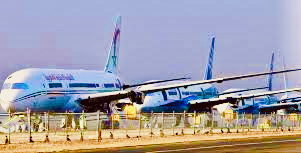 So the FAA has ordered Boeing to replace the leaking faucet parts, specifically faulty O-ring seals, and will keep inspecting through a 45-day comment period, while the planemaker reworks the modules.
So the FAA has ordered Boeing to replace the leaking faucet parts, specifically faulty O-ring seals, and will keep inspecting through a 45-day comment period, while the planemaker reworks the modules.
The resulting grounding/delivery halt applies to some 140 787s (basically the entire fleet). This latest pause follows several Dreamliner stop/start delays over the past two years, mainly over Boeing’s various production flaws and certification miscues.
Nevertheless, the dream lives on…and on to the MAX, at that. (MTC…)
(2/23/23) Jet Tech Rush Meets Throttling Technicalities.
Air travel remains robust; rapidly recovering airlines are screaming for cleaner, greener new planes to meet surging passenger demand. And NASA has joined Boeing ($425m worth) to kickstart research on/development of an entirely new enviro-efficient prototype aircraft with a stretch, streamlined fuselage and longer, thinner wings—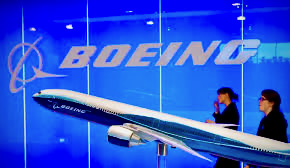 envisioning a 2028 maiden launch.
envisioning a 2028 maiden launch.
Yet while rival Airbus will add 13k new employees to catch up with strong A320(neo) series demand and better address delivery delays, Boeing reports that it is actually trimming its 2023 hiring. So what’s the drag?
Easy Did It?
The (now) Arlington, Virginia-based aerospace giant has announced it will add 10k new hires this year, down some 4k positions from 2022, ostensibly to “better align resources to current production and technology development.” The relative cut in mainly staffing/support positions comes as Boeing announces a $663m Q4 ’22 loss, extending the company’s (fourth) annual losing streak.
Then there is a continuing downdraft from the Lion Air and Ethiopian Airlines disasters. At issue is the ‘deferred prosecution agreement’ that the planemaker reached with the Trump administration Justice Department in January 2021. The settlement enabled Boeing to dodge criminal indictment and trial over ‘conspiracy to defraud the US’ and other counts stemming from the two MAX/MCAS crash tragedies (2018/19) which killed a total of 346 passengers. That deal: $2.5bn in fines/compensation and deferred prosecution with three years’ probation—has victims’ families maintaining Boeing got off too easy, and should be ‘prosecuted to the hilt’.
Therefore they have formally challenged the settlement, claiming they were not apprised in advance of the 2021 proceedings—investigation to handshakes—nor were they allowed to state their opinions and voice their grievances. A federal judge (District Judge Reed O’ Connor in Fort Worth, Texas) has since  agreed that they have standing in the case under the Crime Victims’ Rights Act, allowing family members to testify on the DOJ-Boeing agreement, while requiring the aerospace giant to be duly arraigned. Moreover, these victims’ survivors are calling for an independent monitor to ride herd over Boeing’s compliance with all settlement stipulations. But their DOJ/MAX objections and pleas have since been denied by District Judge O’Connor.
agreed that they have standing in the case under the Crime Victims’ Rights Act, allowing family members to testify on the DOJ-Boeing agreement, while requiring the aerospace giant to be duly arraigned. Moreover, these victims’ survivors are calling for an independent monitor to ride herd over Boeing’s compliance with all settlement stipulations. But their DOJ/MAX objections and pleas have since been denied by District Judge O’Connor.
Nevertheless, Boeing plans to boost 737 deliveries from 374 in 2022 to upwards of 450 in ’23, expanding 737 production to the MAX in its Everett, Washington widebody plant—what with the “747 Queen of the Skies” now being ‘dethroned’. Otherwise, some 80 787 Dreamliners are pegged to belatedly roll out the doors in North Charleston, South Carolina this year as airline/leasing firms demand for twin-aisle ‘heavy’ jetliners (along with Airbus A350-1000s and A380-800s) quickens amid a post-COVID international travel rebound.
Indeed, both manufacturers have just landed record orders from Air India: 220 for Boeing, 250 for Airbus—as the latter boosts production targets for wide-body A330neo and A350 jets, while struggling to keep pace. Nevertheless, Boeing has just halted 787 production anew as the FAA is questioning the aerospace company’s analysis and documentation on its Dreamliners’ problematic forward pressure bulkheads, reportedly found in fuselage barrels supplied by Spirit AeroSystems. Boeing maintains that the technical issue, prompting a procedural, not production pause, poses ‘no immediate safety or flight threat to its currently in-service 787 fleet’.
![]() (3/12/23)—The FAA has now determined that Boeing has adequately addressed 787 production and documentation issues the agency discovered in certification record reviews—specifically that forward pressure bulkhead section located in the plane’s nose. Therefore the FAA may begin rendering final safety approvals in a week’s time; however its own inspectors, not just Boeing staffers, must OK each 787 aircraft out the door. So the aerospace company can begin delivering Dreamliners again, considered key to accelerating its revenue and cash flow. Boeing still projects delivering 70-80 new 787s in 2023—from one to three per month—albeit from previously assembled ‘back stock’. Tack on a just announced order of 80 Dreamliners (with a 40+ option) from Saudi Arabia’s new Riyadh Air.
(3/12/23)—The FAA has now determined that Boeing has adequately addressed 787 production and documentation issues the agency discovered in certification record reviews—specifically that forward pressure bulkhead section located in the plane’s nose. Therefore the FAA may begin rendering final safety approvals in a week’s time; however its own inspectors, not just Boeing staffers, must OK each 787 aircraft out the door. So the aerospace company can begin delivering Dreamliners again, considered key to accelerating its revenue and cash flow. Boeing still projects delivering 70-80 new 787s in 2023—from one to three per month—albeit from previously assembled ‘back stock’. Tack on a just announced order of 80 Dreamliners (with a 40+ option) from Saudi Arabia’s new Riyadh Air.
Thus Vamigré will see what flies first in coming months—vitriolic renegotiations or vigorous MAX re-navigation—keying above all on safety first along the way. (MTC…)
(1/26/23) Double Dealin’ in 7’s and 10’s?
On this purported deadline day, the deadline was dead on arrival—plumb come and gone. Instead, two new aircraft models in question will be allowed to eventually taxi out and take off after all.
For the US Congress had already attached legislation 12/20 to a year-end government spending bill it unveiled that essentially grants Boeing a bye on implementing a design upgrade of its cockpit alert system so that the FAA can proceed to certify the planemaker’s newest models—crucial since the company has just posted a losing Q4 2022. Boeing’s CEO has just attempted to divert public/ shareholder attention by calling for FAA privatization, as if he didn’t have more immediate troubles at hand: As in the victims families’ legal challenge to the Department of Justice-Boeing 2021 settlement on the two 737 MAX tragedies—a federal judge further ruling that the aerospace giant must be arraigned on a previously unsettled criminal charge.
Boeing has thus been cleared on approach to launching its latest 737 iterations sans the higher standard, angle-of-alert-based (AofA) system refinement federally mandated in 2020 after the 2019 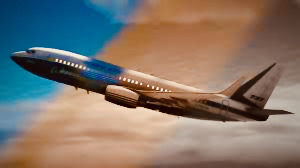 MAX disasters of Lion and Egyptian Air. This waiver covers new MAX 7 and MAX 10 variants developed to join midrange MAX 8’s and 9’s already in service.
MAX disasters of Lion and Egyptian Air. This waiver covers new MAX 7 and MAX 10 variants developed to join midrange MAX 8’s and 9’s already in service.
The smaller, longer range MAX 7, seating 153-172 (full coach class) is set to be certified early in 2023, replacing aging 737-700’s. Some 286 copies have been ordered to date—primarily by Allegiant, WestJet and Southwest Air. Whereas the longer, yet shorter range MAX 10, with up to 230 (all economy) seating, can now undergo flight testing early next year—920 units ordered by UAL, Delta and VietJet so far—projected to begin flying passengers in 2024. Otherwise, Boeing states that it does not plan to produce any new, more efficient models (beyond its 787 Dreamliner) until at least the mid-2030s (too financially infeasible these days?), essentially ceding more commercial jetliner market space to rival Airbus, at the risk of getting left in the tropospheric dust.
The Cantwell Compromise.
Still, this 11th hour reprieve didn’t come without a runway speedbump. While acknowledging that the said alert system upgrade may better signal cockpit crews should something go sideways inflight, Congress and the FAA appear to have reverse thrusted under G.O.P. resistance, and formidable 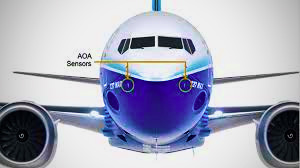 pressure from Boeing lobbyists and its labor unions. The aerospace giant maintained the upgrades were too costly and time/job consuming amid surging market demand for more aircraft, threatening to ground both 7 and 10 production entirely—and since posting a $663m Q4 loss, the company’s fourth annual deficit in a row.
pressure from Boeing lobbyists and its labor unions. The aerospace giant maintained the upgrades were too costly and time/job consuming amid surging market demand for more aircraft, threatening to ground both 7 and 10 production entirely—and since posting a $663m Q4 loss, the company’s fourth annual deficit in a row.
Hence the compromise caveat proposed by Senator Maria Cantwell (D-WA, Commerce Chair), who deflected Republican calls for a straight-up, no-strings extension by instead inserting a conditional amendment. Short of the initial 2020-spawned design upgrade, this ‘full-house’ compromise provides that airlines must retrofit all new MAX 7’s, plus 8’s and 9’s (already in service) with two specified alert system “safety enhancement” tweaks Boeing has already fashioned for its emerging MAX 10’s.
New aircraft in current production will have a one-year retrofit window; 737 MAX’s now in service will get three years after MAX 10 certification to so retrofit all their MAX iterations—beyond which no MAX variants can be deemed airworthy by the FAA without same. Cantwell contends that this mini-modernizing approach assures passengers the entire MAX fleet will be “uniform and safer”, ostensibly given the modified alert/warning system’s more immediate and descriptive messaging interface.
Gap Years Or Mishap Years?
Nevertheless industry observers note that Canadian and European aviation agencies have already moved to require such relatively minor modifications, thus Boeing would have to retrofit 737 MAX craft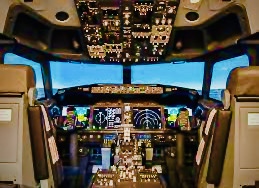 anyway.
anyway.
Meanwhile, certain ALPA pilots (predominantly American Air) dismiss the ‘Cantwell Compromise’ as a gamble, on safety grounds. Let alone Lion/Egyptian Air victims’ families, who decry it as “…reducing safety with pure political power and enabling Boeing’s profits over safety, without (sufficient) hearings, data and scrutiny.”
Whether the FAA doubles down on follow-up oversight of this statute/regulatory compliance remains to be seen—not to mention of “MCAS inclusion as part of the speed trim in the 737 MAX design”. But Vamigré won’t bet the max on hazard-free cockpitry just yet. (MTC…)![]()
(8/27/22) Another 737 Flap?
Now that Boeing progressively feathers its management meddling and retaliatory behavior on behalf of the FAA’s 737 MAX safety monitoring efforts, here comes another 737 family woe. Update (9/24/22)—Boeing Co. has agreed to settle with the US Securities and Exchange ![]() Commission over an agency investigation of the aerospace giant’s (particularly former CEO, Dennis Muilenburg’s) misleading accounts/representations of the 737 MAX safety risks in the wake of the fatal Lion Air and Ethiopian Airlines tragedies. The SEC settlement terms and fine: $200m (+ $1m for Muilenburg) without he or Boeing admitting to or denying wrongdoing.
Commission over an agency investigation of the aerospace giant’s (particularly former CEO, Dennis Muilenburg’s) misleading accounts/representations of the 737 MAX safety risks in the wake of the fatal Lion Air and Ethiopian Airlines tragedies. The SEC settlement terms and fine: $200m (+ $1m for Muilenburg) without he or Boeing admitting to or denying wrongdoing.
Seemingly more frequent than freakish, instances of metal panels breaking away from 737 engine pods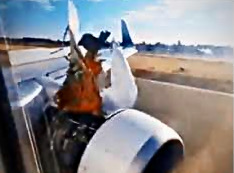 once again rattle airliner passengers who are seat window riveted to the airborne mechanical failures—most recently on an Alaska Airlines flight.
once again rattle airliner passengers who are seat window riveted to the airborne mechanical failures—most recently on an Alaska Airlines flight.
Flapping like Tesla X sedan wings, these fan cowl doors—called nacelles—can swing up, come unhinged, then tear wildly away and shatter mere inches from an engine’s core and protective pod’s wing pylons.
No less hazardous than engine fan blade breaks, which can spin heavy metal shrapnel into pods and airframes, nacelle upswings are mainly caused by malfunctioning lower door latches. Or by maintenance mechanics neglecting to securely fasten them and preflight inspections (e.g., crew, etc.) not latching on.
In all fairness, such fan cowl door incidents occur as often, if not more so on Airbus A320s. But either way, such airborne ‘pod-casting’ threatens to leave startled travelers trapped and flapping in the wind…
(8/10/22) Taking Exemption to the MAX?
Boeing CEO David Calhoun recently drew his line on the tarmac/runway, conceding in essence: “…a world without the (MAX) 10 is not that threatening.” Why the white-flag admission and dismissiveness after so many long months of high-flying procedure and persuasion?
Blame it on a squall of dead-end demands as deadline day looms—or that exemption doesn’t necessarily prove the rule. Posing hurdles/speed bumps is an ever-tightening FAA, still chastened by its ceding past oversight powers to Boeing management, a stretch of MIA regulatory laxity that culminated in the LionAir and Ethiopian Airlines 737 MAX disasters (killing 346). In their wake, Congress passed the 2020 Aircraft Certification, Safety and Accountability Act. Further triggered by an independent MIT study, the legislation stipulates that any new airplane design must conform to the most current safety standards for flight crew alerting systems—which generate a series of visual, aural and tactile warnings of potential problems—within two years.
Boeing’s problem is the ‘pre-reform’ FAA had granted the planemaker an earlier exemption to strict alert system rules, facilitating 737 MAX certification, seen in retrospect to approved an MCAS operational alert technology that’s been determined to have contributed to the fatal crashes of both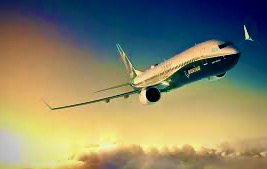 MAX airliners. Now Boeing is seeking to have that very exemption extended to the certification of it new MAX 10 model by the December 20 deadline date—since it is simply the latest version of a 737 MAX family certified earlier on.
MAX airliners. Now Boeing is seeking to have that very exemption extended to the certification of it new MAX 10 model by the December 20 deadline date—since it is simply the latest version of a 737 MAX family certified earlier on.
But hold on, the tighter FAA now says: that original ‘737 family’ dates back some 50 years, and the earlier certifications don’t comply with current safety alert system upgrades—hence that particular exemption no longer flies. Consequently new fitting, retrofitting and training/retraining across the MAX line would be in order before the MAX 10 could fully meet certification requirements.
Sitting on some 650 orders for the MAX 10 craft already, with Delta Airlines now ordering 100 more ![]() (+ 30 more on option) at the Farnborough Air show, Boeing holds that it needs that ‘Xemption’, or at least an extension, to meet that December 20 deadline. Calhoun cites the prohibitive cost and time factors such modifications/training would entail, and cast doubt over the entire ’10’ certification process for the remainder of 2022.
(+ 30 more on option) at the Farnborough Air show, Boeing holds that it needs that ‘Xemption’, or at least an extension, to meet that December 20 deadline. Calhoun cites the prohibitive cost and time factors such modifications/training would entail, and cast doubt over the entire ’10’ certification process for the remainder of 2022.
In any event, the FAA’s directive on the alert system upgrade matter is officially advisory at this point, for Congress must make the final call. Still, Calhoun’s offhand comment does raise the question whether Boeing is asking federal regulators for the same sort of MAX ‘safety shortcut’ that got Boeing in fiscal/ reputation trouble to being with. Such is the claim by aviation industry critics as well as LionAir/ Ethiopian Air crash victim survivors. Then again, when it comes to its shiny new MAXterpice, is the aerospace giant huffing smoke here or actually willing to cut and run…thereby offering no commensurate model to rival a successful Airbus A321neo? Let the lobbying resume—for the suddenly back-in-demand, longer-haul 787 Dreamliner as well…deliveries pending FAA clearance (which it has since received, regulators approving fixes for its carbon-composite fuselage fit-and-finish gaps, albeit with rigorous inspection of each and every plane. So Boeing may begin scheduling sales/delivery of its 120+ parked 787s (grounded since late 2020), beginning with American Airlines, in coming days—landing some sorely needed cash flow).
Otherwise, the latest ‘Airbuzz’ ups and downs:
Airbus SE has not exactly avoided its own pratfalls, trimming its plane-delivery targets and cancelling a key Qatar Airways order of 19 A350 planes in a dispute over “unsafe” cracking/peeling of paint on some wing surfaces. Moreover, just as its flagging superjumbo A380, on its way out of production back in 2019, was given a new lease on flight by Lufthansa Airlines for summer 2023 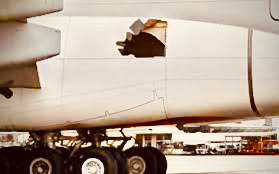 service, another A380 (#A6-EUK) blew one of its 22 tires on a 14-hour Emirates flight from Dubai to Brisbane, Australia.
service, another A380 (#A6-EUK) blew one of its 22 tires on a 14-hour Emirates flight from Dubai to Brisbane, Australia.
The in-flight tire rupture caused a bolt to detach from a landing gear assembly, punching a football size hole in the mammoth plane’s aerod fairing, on the outpanel of skin adjacent to the main fuselage. Flight EK 430 did proceed to land safely in Brisbane, however. The long-haul carrier’s ground staff termed the incident a “…technical fault (that) did not impact the fuselage, frame or structure.” The damaged fairing was then completely replaced.
On a loftier note, Airbus bests Boeing for net plane orders through 2022 so far (656 to 362, thanks to a whopping China booking). Its A320 family alone currently holds a 59% grip on firm orders for narrow body jetliners, compared to the Boeing 737 MAX group’s 41% share. Moreover, Airbus has introduced its A350-1000, which will launch a 20-hour nonstop flight from London or New York to Sydney within three years. The inaugural “Project Sunrise” will include first class and some 140 economy coach (nine-abreast) seating, and will include full media, kitchens and a ‘well-being’ zone for yoga, stretch and other exercise—just the ticket should they run out of peanuts and Pepsi…![]()
(5/24/22) Irish Eyes Unsmiling. ☟
Before Boeing could even begin to hightail out of Chicago, more s*** hit its fan blades. Ryanair CEO Michael O’Leary has very publicly blasted planemaker management for delivery delays on 737 MAX planes it has on order. What particularly irks the Dublin-based carrier is that 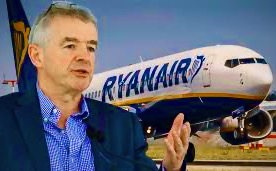 it can’t even get timely delivery on ‘white tail’ aircraft Boeing built over two years ago and still have parked in Seattle—orders which had been cancelled by other airlines during the lengthy MAX grounding. So Ryanair is considering second-hand 737, even Airbus planes to meet its growth demands.
it can’t even get timely delivery on ‘white tail’ aircraft Boeing built over two years ago and still have parked in Seattle—orders which had been cancelled by other airlines during the lengthy MAX grounding. So Ryanair is considering second-hand 737, even Airbus planes to meet its growth demands.
“…(Just) put petrol in the them and f***ing fly them to Dublin,” said O’Leary, bemoaning that Europe’s largest low-fare airline—one of Boeing’s largest customers—must trim its spring and summer schedules (by 600k to 800k seats), as planes expected in April now aren’t slated to be delivered until late June. He bottom lines that either Boeing management has to shape up or ship out, in as many more choice words, because Ryanair needs those 737 MAX aircraft on order and many more well into summers 2023 and ’24. Clearly O’Leary remains a willing customer, if only Boeing is ready and able. Now he just has to negotiate his flight cancellations in the face of a looming staffer strike action.
Update (5/20/22)—Nonetheless, Ryanair’s ‘upper market ’ rivals Aer Lingus, British Airways and Spain’s Iberia—all owned by International Consolidated Airlines Group SA—has ordered 50 new 737-8200 and 737-10 MAX airliners (the latter still awaiting certification), with an option for 100 more of the short-haul models, as if to complement IAG’s predominantly Airbus/Embraer SA fleets. So there’s that, as in lex talionis of the jetliner jungle.
Incidentally, one other contrail from the 737 MAX debacle: This discovery finding in a Texas class-action (fare gouge/safety) lawsuit brought by former customers against Southwest Airlines charges that the carrier deliberately deleted MCAS flight control references from its flight manuals, and sought to conspire with Boeing in 2016 to pull something of a ‘place and switch’. The alleged scheme was to install a new flight control safety alert in a single older 737 to mislead the FAA into believing the MCAS alert was not new to the MAX variant, then deactivating/removing the device once the 737 MAX was certified.
Why? Apparently to avoid further costly pilot training; but evidently the plot didn’t fly. SWA denies the charges, stating that “Southwest vigorously disputes the plaintiffs’ characterization of the facts in this lawsuit”, yet avoided answering to its specific details. Boeing has so far declined to comment. (MTC…)
(6/9/22) Fly-Bye Update.
As currently Chicago-based Boeing reports massive quarterly losses and continuing production/delivery snafus, its immediate solution is to blow town all over again.
The beleaguered planemaker, which moved its corporate headquarters from Seattle to the Windy City over 20 years ago ostensibly to establish a ‘greater global identity’, will now repair to Arlington, Virginia in search of closer ties with key US government officials and legislators in Washington, D.C..
Boeing’s plan is to consolidate with its present government relations campus, which serves its military defense division customers at the Pentagon. Once again the company’s historical heart and soul gets stiffed in any hope for a proper Seattle HQ homecoming. Although Boeing’s manufacturing facilities, 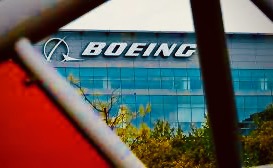 however scaled back, will remain around the greater Puget Sound region, as well as in comparatively tax and union-free South Carolina.w
however scaled back, will remain around the greater Puget Sound region, as well as in comparatively tax and union-free South Carolina.w
This threadbare corporate carpetbagging comes at a time when the aerospace giant projects nearly $1.5bn in Q1 losses related to commercial jet and defense side production costs, plus some $212m in write-offs due to Ukraine and Russian sanctions.
Meanwhile, the company grapples with ever tighter FAA scrutiny (at least through 2025) and labor/ component/supply shortages as it rushes to meet 737 MAX certification deadlines last this year. It further delays delivery of widebody 777-9 variants until 2023, pushes delivery of its new giant 777X at least until 2025, pausing production since it already has more than 20 X’s (Everett plant now nearly empty) backlogged in anticipation of regulatory required reworking and revisions. Then there is the retooling saga of 110 stalled twin-aisle 787 Dreamliners in Charleston pending FAA certification. Boeing’s 787 deliveries have been delayed for about a year over fit-and-finish fuselage problems ($5.5bn+ worth and counting), as premium long-haul airline customers (American to Emirates) remain hamstrung in scheduling/capacity limbo.
Thus yet another “dreadful quarter”, by analyst accounts, begets a second flight from HQ reality, leaving one more hot corporate mess for supposedly bluer skies—stealing even farther away from its culture of engineering and manufacturing excellence in Seattle. No longer so cozy with lax FAA regulators and their fix-on-the-fly compliance pacts, Boeing appears to be dealing with Washington’s post-737 MAX screw-tightening oversight—not by re-tightening its production standards and quality control—but by lobbying its way back into D.C.’s and stockholders’ good graces—seemingly workers, carrier customers and safety-conscious air travelers be damned.
This, while industry watchers detect a ‘Wrong Way’ Corrigan game plan here, and rival Airbus continues to eat Boeing’s box lunch in terms of overall new aircraft orders (A321-A350s), adding 1,000 new jobs and a second assembly line in its Mobile, Alabama assembly plant, similar supply-chain delays notwithstanding.
Alas, when all else fails, pack up your old jet bag, and bail, bail, bail… (MTC…)
(5/18/22) China Straits Update.
It appears that Boeing has been essentially absolved on the China Eastern Airlines crash front. A highly anticipated data analysis drawn from the Flight 5735’s severely damaged ‘black boxes’ points to cockpit ‘aerocide’™, according to Chinese and US NTSB officials. That is, someone on the 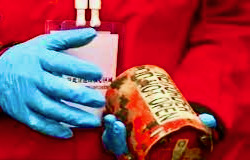 flight deck deliberately drove the fully airworthy 737-800NG some 29,000 feet nose-first into the Wuzhou area mountainside last March 24.
flight deck deliberately drove the fully airworthy 737-800NG some 29,000 feet nose-first into the Wuzhou area mountainside last March 24.
Apparently, the plane’s landing gear were not deployed, its flaps not extended, so the investigation is now focusing on cockpit behavior, as well as the possibility that someone else had entered the cockpit and overtaken the crew or somehow hacked into the cruise control. Despite rampant rumors that one of the pilots had ‘personal problems’, the Civil Aviation Administration of China (CAAC) has officially shot down  such speculation thus far. Nevertheless, CAAC director, Feng Zhenglin urged China’s officials in early April to “…Make utmost efforts to solve employees’ problems…and ensure their physical and mental health…to lay a solid foundation for the front line to operate safely.” Moreover, China Eastern has reportedly since tightened it cockpit requirements—minimum: two senior captains with one senior co-pilot, or a senior co-pilot with two flight instructors in all flights.
such speculation thus far. Nevertheless, CAAC director, Feng Zhenglin urged China’s officials in early April to “…Make utmost efforts to solve employees’ problems…and ensure their physical and mental health…to lay a solid foundation for the front line to operate safely.” Moreover, China Eastern has reportedly since tightened it cockpit requirements—minimum: two senior captains with one senior co-pilot, or a senior co-pilot with two flight instructors in all flights.
So we shall see (or won’t we, CAAC?). In any (head) case, should this turn out to be a matter of pilot ‘aerocide’, it would be the third such major disaster in under ten years. Most recent: the GermanWings crash in 2015, in which co-pilot Andreas Lubitz flew his jetliner into a French hillside, killing himself and nearly 150 passengers and crew. In addition, an EgyptAir US-to-Cairo flight was intentionally pitched into the Atlantic Ocean, by a relief co-pilot disconnecting his autopilot, drowning all 217 passengers and crew. (MTC…)![]()
(4/20/22)—A preliminary report on the China Eastern Airlines 737-800NG crash issued by China aviation security regulators, meeting a Convention On International Aviation (COIA) deadline, concludes that Flight 5735 met all commercial standards, had no operations/maintenance issues, nor was it carrying dangerous cargo. Moreover, communication between the flight crew and air traffic control was ‘normal’ before the plane’s deadly plunge from 29,000 feet March 24.
Speculation centers on flight control software error or a horizontal stabilizer malfunction, as the aircraft would by design remain stable, nose to tail, while inflight. And such a high-speed nosedive would not occur unless the stabilizer controls had met with extreme force. However no mention of any such deliberate pilot pressure was made, at least in this finding.
China’s Civil Aviation Administration regulators have been conducting the China Eastern investigation in coordination with the US NTSB, including shipping the ‘black boxes’ to Washington D.C. for examination. The China report does note that mining further data from the plane’s severely damaged flight and voice recorders will take significantly more time. Meanwhile responsibility/liability issues fester on. (MTC…)
Otherwise, Chicago-based planemaker is being pressured by ex-FAA and former Boeing flight control experts to upgrade 737 MAX cockpit safety design. This flight-deck retrofitted revamp would better alert pilots to a plane’s mechanical malfunctions. But Boeing is balking at such a thorough redesign, citing time and cost amid increasing customer demand/delivery pressures. Nevertheless, the troubled company’s resistance and half-measure counter-fixes could jeopardize much needed FAA certification of its latest Boeing MAX-10 variant. (MTC here too…)![]()
Update (4/6/22) China straits.
Chances are production and delivery of Boeing 737-900 and MAX iterations may be somewhat impacted by the fatal crash of an earlier 800 NG model in southern China. For China Eastern Airlines flight MU5735, from Kunming to Guangzhou, went down near Wuzhou March 21, killing all 132 (123 passengers, nine crew) onboard.
The six-year-old NG aircraft was cruising at about 29,100 feet between 2:20-2:30 p.m. when it suddenly plummeted nose first at more than 350 m.p.h., briefly righting itself, before slamming, disintegrating into a forested Guangxi region mountainside. Only the cockpit voice and flight data recorders, some engine and fuselage fragments have been salvageable in the scattered wreckage of China’s deadliest airline crash in almost three decades. Still, the Shanghai-based, state-owned carrier immediately grounded its entire 233 plane 737-series fleet until cause factors are determined as to how and why the ‘technically stable, certified airworthy’ aircraft (with a long experienced crew) fell so quickly and dramatically from relatively tranquil skies. But questions were being raised about the airline’s maintenance record in various social/ media accounts—most of which were abruptly suppressed.
the Shanghai-based, state-owned carrier immediately grounded its entire 233 plane 737-series fleet until cause factors are determined as to how and why the ‘technically stable, certified airworthy’ aircraft (with a long experienced crew) fell so quickly and dramatically from relatively tranquil skies. But questions were being raised about the airline’s maintenance record in various social/ media accounts—most of which were abruptly suppressed.
Clearly Boeing’s 737-800 variant is a workhorse for airlines worldwide, and has logged one of the safest records in commercial aviation. Nevertheless China’s now super-sensitive and chary CAAC safety regulators will likely scrutinize NGs throughout the country’s three state-run carriers (+ Air China and China Southern Airlines), if not reconsider its recent 737 MAX recertification process: As if Boeing needs any more trade problems with this huge Asian aviation market.
The Chicago-based planemaker will certainly join CAAC in the painstaking, geopolitically charged Flight 5735 crash investigation (it and US NTSB have since formally entered into the probe), what with Airbus SE in the wings and China’s Commercial Aircraft Corp. (Comac) C919 737 rival expected to enter service later this year. Moreover China Eastern is slotted to be its first customer. (MTC…)
2/18/22—Something of a sun-break brightened Boeing’s overcast recently as Indonesia re-authorized 737 MAX aircraft to fly its territorial skies on December 29—effectively a significant show of faith after the Lion Air Flight JT610 and Ethiopian Airlines Flight 302 tragedies of 2018/19.
The recertification comes at a time when the Chicago-based planemaker sees Airbus SE further surpass it 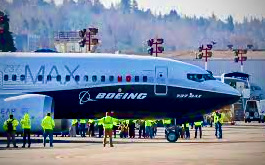 in the single-aisle sack race (a 68% market share), inking major A320neo deals with Air France-KLM Group (160 copies) and Qantas Airways (40 w/94 more optioned)—both carriers long, exclusively loyal Boeing customers.
in the single-aisle sack race (a 68% market share), inking major A320neo deals with Air France-KLM Group (160 copies) and Qantas Airways (40 w/94 more optioned)—both carriers long, exclusively loyal Boeing customers.
Still, over 700 orders for 737 MAX variants have been booked since they returned to service in late December, as carriers continue to replace older, fuel thirsty narrow-body aircraft. Add the latest order for 50+ a 50 more option on 737 MAX and 737-7/8 models by Las Vegas based, low-cost Allegiant Air; with Southwest Airlines’ order book currently MAXing nearly 450. Nevertheless Boeing’s road back from its MAX/MCAS debacle remains steady but slow as it goes.
What’s more, storm clouds continue to gather over Boeing’s 777 program with the FAA suggesting redesigns to the craft’s external engine coverings. The Pratt & Whitney’s metal cowlings have broken apart inflight, shattered by failing fan blades, on three separate occasions. Most recently, a United Airlines engine covering blew out last February shortly after takeoff from Denver, debris scattering down to suburban lawns. Previous such incidents occurred over Hawaii (2018) and Japan (2020).
Wide-body 777s have essentially been grounded since early 2021, the FAA now prescribing strengthening  measures to its P&W engine cowlings and fan blades that will better the aircraft’s prospects for passing airworthiness inspections, then returning to passenger service.
measures to its P&W engine cowlings and fan blades that will better the aircraft’s prospects for passing airworthiness inspections, then returning to passenger service.
Now the FAA is down with the Dreamers, or is it down on them? For the aerospace agency has descended on Boeing’s Everett and North Charleston, South Carolina assembly plants to assume total control over inspection/ recertification of the troubled 787 Dreamliner. Mistrust and verify: Regulators will retain such authority at least until they are convinced the planemaker’s production standards and quality control meet stricter federal standards—much as the FAA recently has done with the 737 MAX. Its 787 deliveries effectively halted since October 2020, Boeing has been restart/stop again bickering with the aerospace agency ever since, currently hoping to resume stable relaunches come spring.
Meanwhile, American Airlines announced last month that it must cut back on international flights in summer, 2022 (to barely 80% of its summer 2019 overseas schedule) due to Boeing’s production woes/ delivery delays concerning those wide-body 787 Dreamliners. Here, assembly snags center on fuselage fit and finish defects predominantly at its South Carolina facility. Other impatient carrier customers are rattling rudders regarding 787 purchase contract penalties or cancellations, if not threatening to walk away from these Dreamliner nightmares altogether.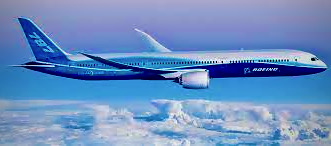
All told, short of moving back to Seattle, where its legendary aerospace engineering prowess truly resides (and Boeing is selling off its commercial aviation properties to raise cash), the planemaker can only hope the Indonesian reprieve bodes well for bluer skies as it re-flies yonder and beyond.
This, as it relaxes employee vaccination mandates company-wide to help ease an order backlog, waggles politically and presses ahead with its net-zero decarbonization and sustainability (SAF/hydrogen/electric fuels) strategies between now and 2050.
Boeing is also burdened with $42bn in net debt amid largely stalled international air travel, writing off $3.5bn in compensation to airlines for late 787 deliveries in January alone, plus $2bn more in manufacturing redo costs. Still, the company vows to fight off charges of steep cultural decline by re-leading with its fabled engineering excellence (some 52,000 engineers strong).
All of which Vamigré will clearly follow, short term and long: Mainly to see if the storied airplane manufacturer can safely restore its aerospace prominence, soaring above and beyond current admonitions, among them: ‘With What Boeing’s Been Showin’, We Ain’t Goin’. (MTC…)
Update: 9/7/21 (Pluck of the Irish)—Dreams of a hefty 100 plane order for Boeing’s new 737 MAX 10 were 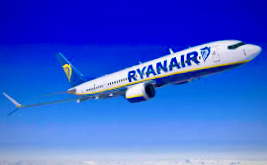 dashed by Dublin-based Ryanair Holdings over the Labor Day weekend. Europe’s largest discount carrier cited the Chicago-based aerospace giant’s overpricing of its high-capacity single-aisle jetliner, breaking off negotiations after 10 “time wasting” months. Long-standing partner Ryanair will instead simply stick with its previous order of 210 smaller Boeing MAX-8200’s, to be delivered over the next five years. For its part, the planemaker holds that “…we continue to be disciplined and make decisions that make sense for our customers and our company.” Duly spinning one toasted order…
dashed by Dublin-based Ryanair Holdings over the Labor Day weekend. Europe’s largest discount carrier cited the Chicago-based aerospace giant’s overpricing of its high-capacity single-aisle jetliner, breaking off negotiations after 10 “time wasting” months. Long-standing partner Ryanair will instead simply stick with its previous order of 210 smaller Boeing MAX-8200’s, to be delivered over the next five years. For its part, the planemaker holds that “…we continue to be disciplined and make decisions that make sense for our customers and our company.” Duly spinning one toasted order…
10/15/21—As a MAX/MCAS aside, Boeing’s former chief technical officer, Mark Forkner, has just been indicted by a Texas grand jury, charged with fraud: deceiving FAA regulators who were evaluating the 737 MAX for certification—endangering airline passengers and leaving “pilots in the lurch”—saving tens of millions of dollars for the company. More specifically, US Justice Department prosecutors allege that Forkner solely provided federal officials with “false, inaccurate and incomplete information” on the MCAS flight control system, then callously boasted that his act was a “Jedi mind trick”, and that MCAS was “designed by clowns, who in turn were supervised by monkeys.” What the sly trickster…346 laughs a minute, while those FAA regulator “monkeys” remain unblamed/uncharged in the case.
Better that a chastened Boeing is now charting its more time-honored course—having agreed to pay hundreds of millions in fines to the investigating Justice Department and compensation to crash victims’ families and 737 MAX customers—with an SEC probe, shareholder actions and multiple lawsuits stemming from the Lion Air and Ethiopian Airlines tragedies still in the hopper. (MTC…)
Update: 7/16/21 (The New Switcheroo?).
In this latest 737 snafu, the FAA has issued Boeing an airworthiness directive to inspect all 737s for potential ![]() failing of the model’s cockpit/cabin altitude pressure switches. The dual switches are designed to warn flight crews of hazardous pressure drops, activating should an aircraft’s altitude rise to over 10,000 ft. (normally pressurized for up to 8,000 ft.) during inflight depressurization, thereby warning of a perilous drop in cabin oxygen levels .
failing of the model’s cockpit/cabin altitude pressure switches. The dual switches are designed to warn flight crews of hazardous pressure drops, activating should an aircraft’s altitude rise to over 10,000 ft. (normally pressurized for up to 8,000 ft.) during inflight depressurization, thereby warning of a perilous drop in cabin oxygen levels .
The order applies to 2,502 737s in the US, 9,315 worldwide, requiring repetitive tests within 90 days of the AD’s effective date, and/or every 2,000 flight hours—and the immediate replacement of any faulty switches. The FAA issuance comes after flight operators reported that said switches malfunctioned in testing on three different 737s.
6/29/21—The FAA has since signed off on Boeing’s repair order for the flight-deck electrical snag that resulted in the MAX re-grounding referenced directly below☟. The agency’s approval allows Boeing to issue service bulletins on its manufacturing changes that will enable airlines’ MAX operators to fix a faulty electrical connections on a standby power unit, as well as a circuit breaker panel and the 737 variant’s main instrument panel.
Such repairs are expected to take a day or so per unit, at a little over $150k each—partially covered by the MAX’s warranty—making hundreds of Boeing’s flagship jetliners airworthy, cleared to fly once more. The variant’s outlook is brightening even more with a new 200 MAX order from historically loyal United Airlines (50 MAX 8-9s; 150 MAX 10s) + 70 Airbus A321neos. It would appear the orders come largely at bargain per-copy prices, on planes to be delivered over the next five years.
Boeing otherwise vows to keep close tabs on the electrical grounding snafu fixes as carrier fleets return to service; likely a chastened FAA will be monitor the beleaguered MAX models’ progress even closer. “Boeing needs to get their act together to get these airplanes back in service and provide incentives for airlines to stay with the program,” said Steven Udvar-Hazy, Chairman of Air Lease Corporation in a recent Zoom conference. “The (MAX) is very, very popular if we can get it back in the air.” Nothing hazy about that. Along those lines, since returning to carrier service, re-airworthy MAXes have logged 60k flights totally 130k flight hours without incident.
Meanwhile the super longer (by some 14 feet), 230-passenger 737 MAX 10 will be waiting in the wings until perhaps 2023, pending development of a “synthetic” third Angle of Attack (AofA) sensor for the new variant’s flight operating system, and other safety enhancements, in the face of uber tight FAA and European Aviation Safety Agency (EASA) pre-certification scrutiny. Incidentally, FAA regulators have also tightened their certification screws on Boeing’s 787 Dreamliner and new jumbo 777X widebody.
April 9, 2021: (Asleep at the Switch?)
Alas, the encouraging re-entry of 737 MAX aircraft to everyday airline service suddenly ground to a halt late this week, as customer/carriers were forced to remove some 70 most recently delivered MAX models (those assembled from March 2019 on) from their skies.
If it wasn’t the nose cone (AofA) sensors, it was the horizontal stabilizers plaguing the 737 MAX and its MCAS operating system since the fatal LionAir and Ethiopian Air crashes. But now the troubled model is afflicted with a power control unit problem threatening the safe functioning of an auxiliary power unit  (APU) in the plane’s tail, as well as its anti-icing system. Boeing discovered the electrical system glitch and officially the FAA this past Thursday, with the agency and Chicago-based company in turn advising some 16 air carriers, which temporarily removed the recently re-certified and delivered MAXes from service.
(APU) in the plane’s tail, as well as its anti-icing system. Boeing discovered the electrical system glitch and officially the FAA this past Thursday, with the agency and Chicago-based company in turn advising some 16 air carriers, which temporarily removed the recently re-certified and delivered MAXes from service.
The planemaker described the issue as inadequate grounding of a backup electrical control unit that was currently being secured to flight deck racks with fasteners, rather than the tighter rivets employed heretofore. That switch, made in concert with an Irish-based supplier (compounded by problems with nearly 40 of Eaton’s stabilizer motors), was poorly vetted down the production line, and potentially compromises the control unit’s ground path, resulting in tail horizontal stabilizer motor failure. Although no specific instances of such an ‘abnormality’ due to the modification have been reported thus far.
Still, it’s yet another flap involving the MAX’s horizontal stabilizer system. No date has been set for the affected models’ return to airline operation—presenting carriers with yet another round of routing and scheduling challenges at this most trying pandemic time. As for the aerospace giant, this is one more step backward in a step-forward struggle to restore its pre-MAX record of technical and product excellence.
+ See backgrounding update: March 12, 2021☟
January 30, 2021 (MAX: ReBound For Glory?).
Actually Boeing has since received even better news than November’s☟. For American Airlines’ Flight 718 has taken off from Miami with many paying passengers among 100 onboard, landing safely at New York’s LaGuardia Airport. Now having launched a neo-inaugural US run for the recertified 737 MAX aircraft, American Air will soon return 34 more of its MAXes to service—with with 1,400 retrained pilots rotating at the fleet’s controls. Moreover, United and Southwest will refly their MAXes in early 2021, with UAL boosting its MAX order by some 24 planes ☟. Still, many of the MAX models rolling off Boeing’s Renton assembly line are going straight to storage.
The first actual commercial flight of a recleared 737 MAX jet had taken off earlier this month. Brazil’s largest carrier, Go! Airlines launched a flight from Sao Paolo to Porto Alegre, with full service of its eight 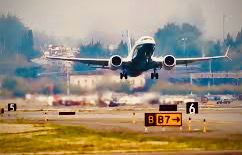 MAX fleet scheduled to begin December 18—notwithstanding a hydraulic pressure drop and engine shutdown during an Air Canada 737 MAX-8 test flight just before Christmas.
MAX fleet scheduled to begin December 18—notwithstanding a hydraulic pressure drop and engine shutdown during an Air Canada 737 MAX-8 test flight just before Christmas.
This, in the wake of Irish low-fare airline, Ryanair’s signing of an order for 75 additional 737 MAX-9 aircraft, boosting its order book for the troubled variant to 210. Both Ryanair Group CEO Michael O’Leary and Boeing honcho David Calhoun radiated confidence in the MAX jet at a Washington D.C. press conference, noting the plane’s key role in the airline industry’s quick, vaccine led COVID-19 recovery—positioning Ryanair for rapid 2021 growth with an expanded (all-Boeing) fuel efficient fleet.
The bargain carrier’s order, first since MAX’s ungrounding, comes fittingly with a bargain basement price tag. Nevertheless, the Chicago-based planemaker rejoices at this new ‘B-12 shot’ order, having lost hundreds of orders of late, facing contract cancellations and stalled delivery of both MAXes (with MAX 10s on the way) and 787 Dreamliners—plus mounting compensation claims and a share price tailspin of some 30%.
Update: 3/12/21—Still, the company is now logging more orders than cancellations for the first time in 15 months. Even while the planemaker (and the FAA) remain under Congressional scrutiny over 737 MAX certification deficiencies. In response, Boeing claims it is reforming its entire engineering corps into a single integrated unit ‘to elevate safety and quality’, answerable to a chief aerospace safety officer, who will report to the company’s board of directors in Chicago.
![]() What’s more, Boeing has just settled with the US Department of Justice to ‘defer’ prosecution on criminal fraud/misconduct charges relating to the initial certification of 737 MAX aircraft. The company agreed to pay a $2.5B+ fine, and an additional $500M to further compensate LionAir and Ethiopian Airlines’ victims families, as a result of former Boeing Chief Technical Pilot Mark Forkner and his deputy Patrik Gustafsson allegedly deceiving the FAA on the safety of MAXes’ new MCAS flight control system. Neither they nor any other present or former Boeing employees have been criminally charged so for; but the company itself remains on DOJ-mandated ‘fraud probation’. Update: 9/23/21—Forkner now faces federal indictment for deceiving FAA regulators and the airlines during the MAX’s/MCAS certification process. (MTC…)
What’s more, Boeing has just settled with the US Department of Justice to ‘defer’ prosecution on criminal fraud/misconduct charges relating to the initial certification of 737 MAX aircraft. The company agreed to pay a $2.5B+ fine, and an additional $500M to further compensate LionAir and Ethiopian Airlines’ victims families, as a result of former Boeing Chief Technical Pilot Mark Forkner and his deputy Patrik Gustafsson allegedly deceiving the FAA on the safety of MAXes’ new MCAS flight control system. Neither they nor any other present or former Boeing employees have been criminally charged so for; but the company itself remains on DOJ-mandated ‘fraud probation’. Update: 9/23/21—Forkner now faces federal indictment for deceiving FAA regulators and the airlines during the MAX’s/MCAS certification process. (MTC…)
Thus no doubt the hobbled aerospace giant is beholden to the loyalty of core 737 customers like Ryanair and Southwest Air, and news that Alaska Air is throwing over its Airbus aircraft for a fresh order for 68 MAXes at a bargain price tag. Still, Boeing’s beleaguered single-aisle model (with 800 MAXes already idled about the globe) has many miles to log before regaining market share lost to Airbus SE’s A320/1/neo over the course of a 20-month worldwide grounding and overall travel industry collapse.
Nevertheless carriers seek to swap their older aircraft for more fuel efficient MAXes, which use 14% less jet fuel, for example, than previous 737 Ngs. The grounded planes also offer longer range, essential for 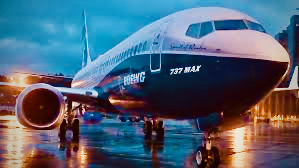 airlines’ planned long-distance route expansion. A recent crash of Sriwijaya Air’s smaller 1990s-era 737-500 into the Java Sea shortly after takeoff from Jakarta to Pontianak, Indonesia—killing 62—only underscores the pressing need for newer, advanced MAX models.
airlines’ planned long-distance route expansion. A recent crash of Sriwijaya Air’s smaller 1990s-era 737-500 into the Java Sea shortly after takeoff from Jakarta to Pontianak, Indonesia—killing 62—only underscores the pressing need for newer, advanced MAX models.
Little wonder Boeing’s current rising stock price also reflects the reality that existing MAX contracts are difficult to cancel, or that fleet logistics become problematic (operationally, maintenance wise, etc.) if/when considering , say, the Airbus A320/1 single-aisle alternative. till, the company has many miles to fly before regaining ground lost to its European competitor, particularly Airbus’s latest A320neo.
At the same time, American Airlines is launching a series of 737 MAX test flights aimed at restoring confidence in its 24+ MAX fleet. Aboard an initial takeoff were A/A CEO Doug Parker, president Robert Isom and other high-ranking employees. A follow-up demonstration roundtrip flight 9750, between Dallas and its Tulsa maintenance facility, lasted slightly over an hour. The two-year-old jet carried 95 American Air crew/employees and media—the first public passengers on a MAX aircraft since March, 2019.
One small step for a MAX, one giant leap for the MAX line: American’s promo blitz comprises on-the-ground tours for its corporate customers, including hands-on demos of the planes’ revamped flight control technology by the carrier’s ace pilots and mechanics—all such ‘edu-suasion’ efforts pointing toward a December 29 ‘re-inaugural’ commercial flight between Miami and New York’s LaGuardia Airport. Moreover, A/A employees will be boarding a number of trial ‘flights to nowhere’, designed to ensure they are fully onboard with their MAXes’ coming resurrection. Wing-and-prayer hope being that despite today’s travel slump (with 25% of travelers likely resisting MAX flights), they will soon have somewhere to fly.
November, 2020—The Boeing Corporation could receive no more welcome news recently than that the Federal Aviation Administration has determined the 737 MAX aircraft fixes now “mitigate safety concerns”, thereby making the planes airworthy once more.
Yes, but will the FAA finding fly with our greater beyond?
To be sure, U.S. safety regulators have cleared the troubled jetliner for takeoff again, lifting a MAX-wide grounding order that has shackled the troubled planes for months on end—even it not immediately taking effect. Current FAA head, Stephen Dickson said the agency “…has done everything humanly 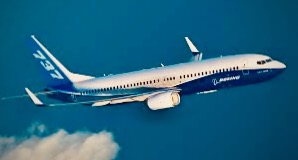 possible” to ensure that such tragic LionAir and Ethiopian Airlines crashes will not happen again; that he is “…100% confident” in the MAX’s safety going forward, and “…comfortable with (his) family flying on it.” In turn, aviation authorities worldwide (e.g., EASA, ANAC among others) are expected to sign off for clearance by early 2021. Further along: EASA (European Union Aviation Safety Agency) has now cleared the 737 MAX for service return, hinged upon certain avionics refinement and an added third AofA measure. Canada and Brazil authorities have already cleared the MAX for renewed takeoff.
possible” to ensure that such tragic LionAir and Ethiopian Airlines crashes will not happen again; that he is “…100% confident” in the MAX’s safety going forward, and “…comfortable with (his) family flying on it.” In turn, aviation authorities worldwide (e.g., EASA, ANAC among others) are expected to sign off for clearance by early 2021. Further along: EASA (European Union Aviation Safety Agency) has now cleared the 737 MAX for service return, hinged upon certain avionics refinement and an added third AofA measure. Canada and Brazil authorities have already cleared the MAX for renewed takeoff.
Meanwhile, Boeing’s present CEO, David Calhoun declares that the Chicago-based planemaker has made safety culture and practices “…priority number one” in the wake of those fatal accidents and MAX’s subsequent grounding. For this catastrophe has cost the aerospace giant more than $20b and counting, with other investigations, fines and lawsuits on the horizon. This, while it’s scrambling to ready some 450 yet-to-be-delivered MAXes currently in storage, and find new customers for 60 core 737 variant ‘white tails’ parked in and around Boeing’s Renton, WA assembly plant. Indeed, the jet builder also juggles a 4,200 plane backlog (mostly for MAXes) in its order book with a 19% drop in its global workforce since earlier 2020.
But first, the FAA requires Boeing and its existing airline customers to complete specific modifications and 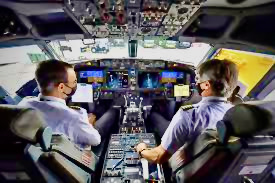 maintenance on flight control hardware/software (i.e. MCAS)–and to reroute internal wiring on over 385 MAXes in service prior to the grounding. Moreover pilots must undergo extensive computer training, full-flight simulator preparation addressing a breadth of possible scenarios. Further, detailed flight control system briefings will be administered domestically and strategically on-site for MAX-flying international carriers. Particular focus will be on the avoiding of faulty MCAS activations, on monitoring sensor conflict alerts, and updating MAX flight manuals—guesstimated to take some 1,000 hours of technical analysis and reworking per plane.heretofore.
maintenance on flight control hardware/software (i.e. MCAS)–and to reroute internal wiring on over 385 MAXes in service prior to the grounding. Moreover pilots must undergo extensive computer training, full-flight simulator preparation addressing a breadth of possible scenarios. Further, detailed flight control system briefings will be administered domestically and strategically on-site for MAX-flying international carriers. Particular focus will be on the avoiding of faulty MCAS activations, on monitoring sensor conflict alerts, and updating MAX flight manuals—guesstimated to take some 1,000 hours of technical analysis and reworking per plane.heretofore.
Buy the Numbers.
Nevertheless, airlines are eager to unleash their 737 MAX fleets, despite today’s dire travel/traffic downdrafts—even though in some cases dropping the now infamous MAX moniker, referring to their models merely as 737-8s or 737-9s.
Why so? Because carriers seek to swap their older aircraft for more fuel efficient MAXes, which typically use 14% less jet fuel than previous 737 NGs. The grounded planes also offer longer range, essential for airlines’ planned long-distance route expansions. Boeing’s current rising stock price also reflects the reality that existing MAX contracts are difficult to cancel, or that fleet logistics become problematic (operationally, maintenance wise, etc.) when considering, say, the Airbus A320/1 single-aisle alternative.
American Airlines is the first to schedule a 737 MAX takeoff once the ban is lifted: a December 29 flight between Miami and New York’s LaGuardia Airport. United is expected to follow with flights out of Houston and Denver early in 2021, with domestic and international carriers re-flying their stalled MAX aircraft throughout the spring. Update (3/2/21): UAL, pleased with its MAX service return, has just increased its overall MAX order by 24 aircraft, boosting it existing 30 MAX fleet in anticipation of a consumer travel ‘inflection point’ reboud by year’s end. The carrier also projects adding over 90 more such units by 2023, taking advantage of Boeing’s current relative bargain prices, well below the planemaker’s $120m+ per-copy list. SWA orders are geared to follow, as are a number for low-cost carrier start-ups worldwide.
All Aboard…or Abhorred?
Clearly, the FAA’s green light does not mean that grounded 737 MAX jetliners will be airborne in the immediate future, but global constraints are already being tweaked. The U.S. House just passed a bipartisan bill tightening FAA certification procedures and paneling a review of Boeing’s safety culture. While the Airline Pilots Association is reviewing revised MAX pilot training, but finds the FAA/Boeing engineering fixes ‘sound and effective’.
The only unified resistance to such a “hasty” recertification process comes mainly from LionAir and Ethiopian Airlines victims’ survivors—perhaps understandably so—who insist that this administrative ‘rush job’ is compromising safety, if not tantamount to the government/industry denials and negligence that led to both fatal crashes in the first place.
Now of course will come the ‘readiness’ and demonstration test flights, promotional blitzes, high-profile tours and endorsements. Politicos, corporate warriors, tourism touts, celebrities and social media influencers will be singing praises of the MAX. Airline CEOs will confidently put their reputations and lives on the line and in the skies. Carriers already claim they will be transparent over what model aircraft their passengers are scheduled to be boarding as MAXes return to service. Customers ostensibly will be notified at the gate, by e-mail, text and push notifications. Balkers would be re-booked, free of charge—with refunds and compensatory vouchers for future flights in the offing, depending upon the original reservation/ ticket status.
on the line and in the skies. Carriers already claim they will be transparent over what model aircraft their passengers are scheduled to be boarding as MAXes return to service. Customers ostensibly will be notified at the gate, by e-mail, text and push notifications. Balkers would be re-booked, free of charge—with refunds and compensatory vouchers for future flights in the offing, depending upon the original reservation/ ticket status.
All told, aviation and tourism industry leaders apparently will do whatever necessary to rise above anticipated public reluctance—to get us safely, sanely onto re-airworthy 737 MAX airliners in these trying travel times.
So we will see whether this FAA recertification ruling and any unMAXing of the 737-8/9 will fly, no matter how hard they try. That is, what exactly will it take for us to take a MAX flight ever again? (MTC…)
